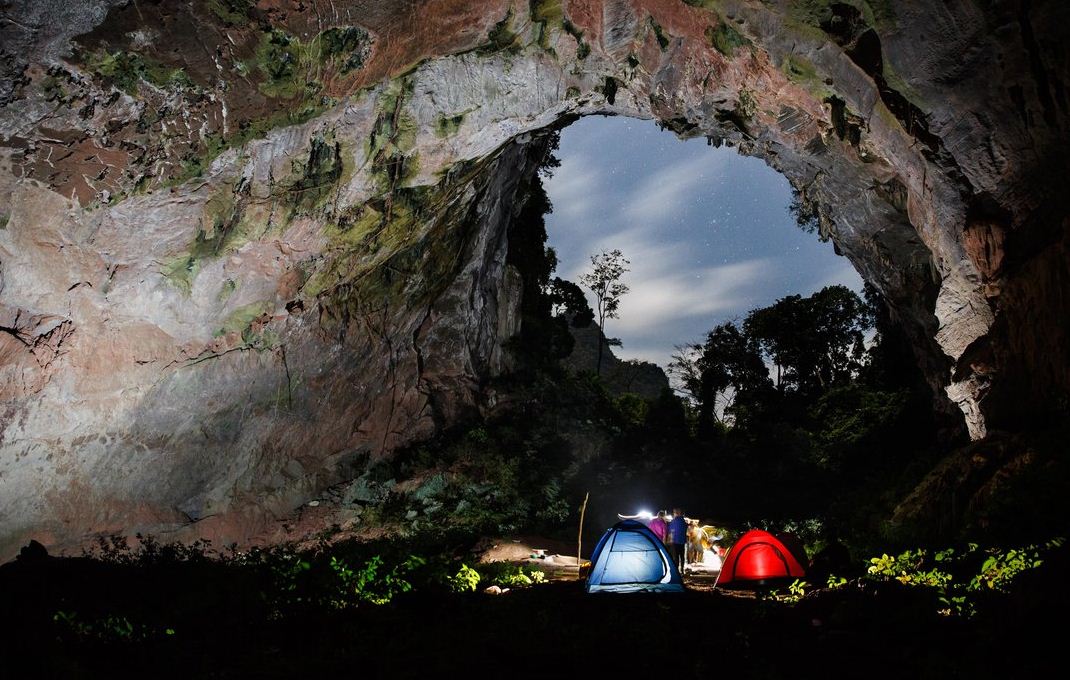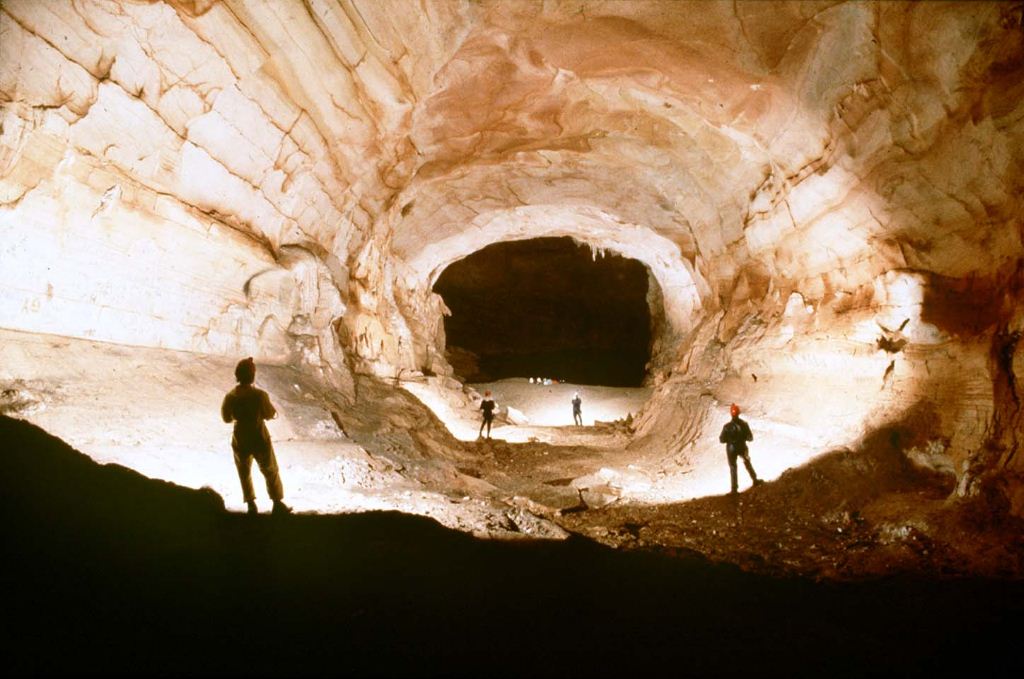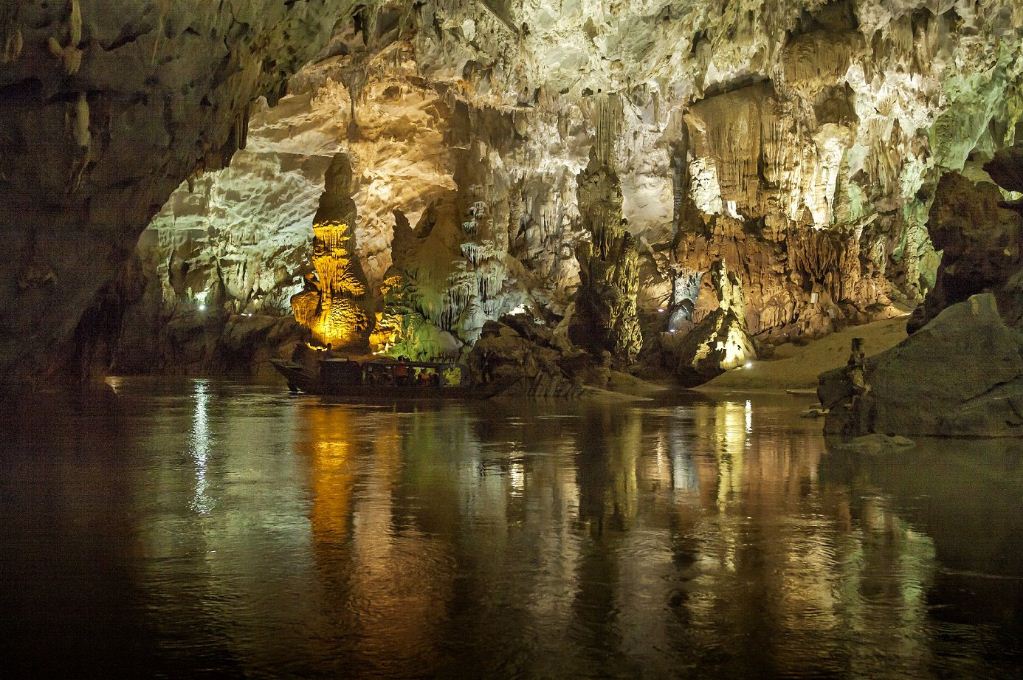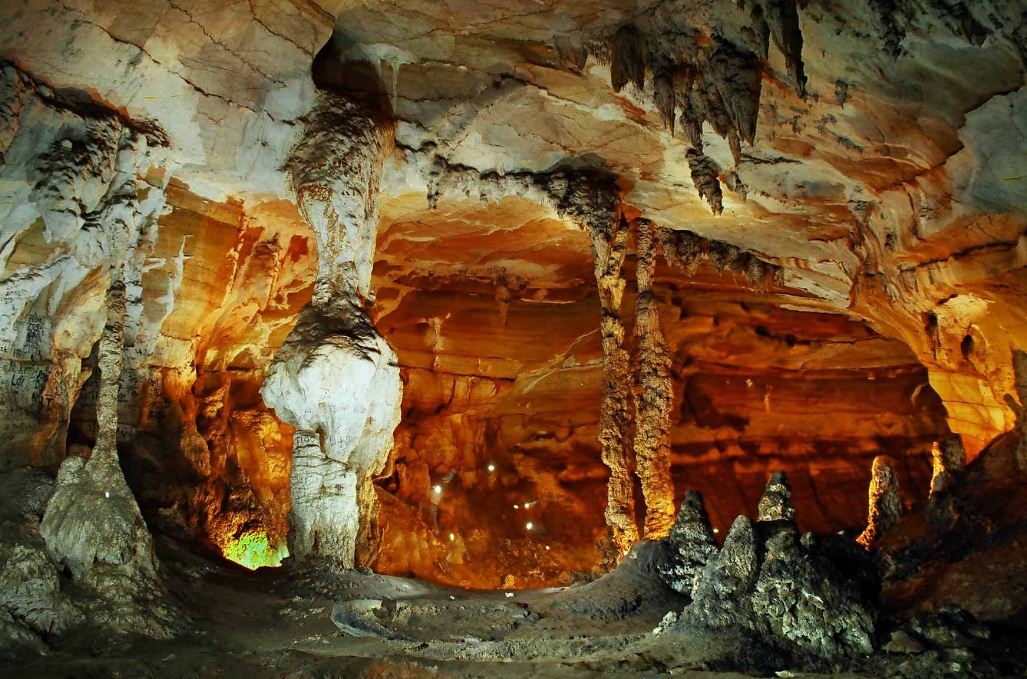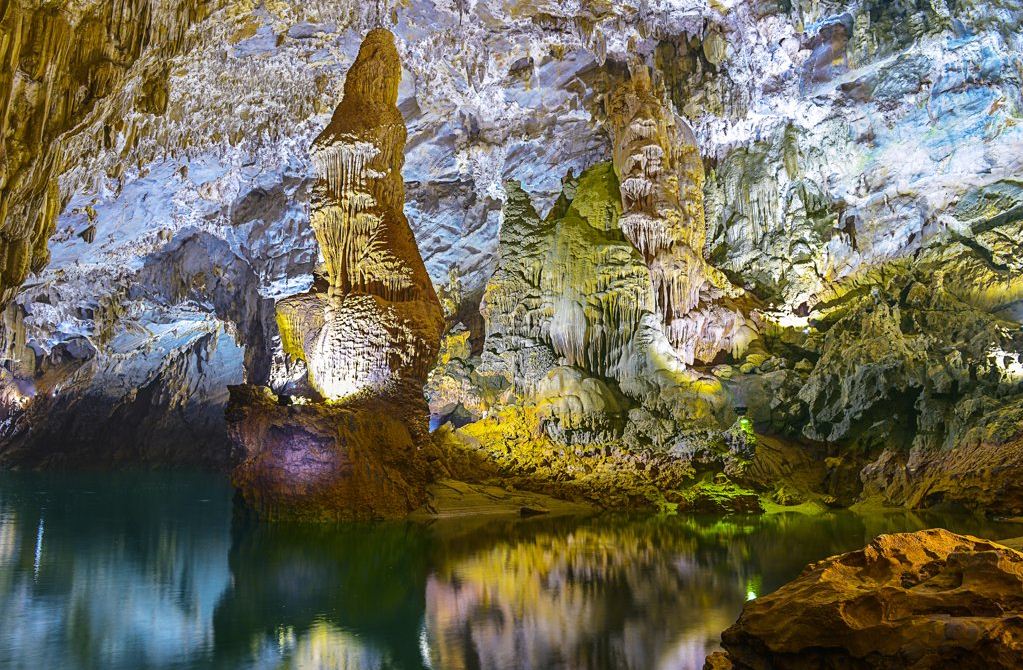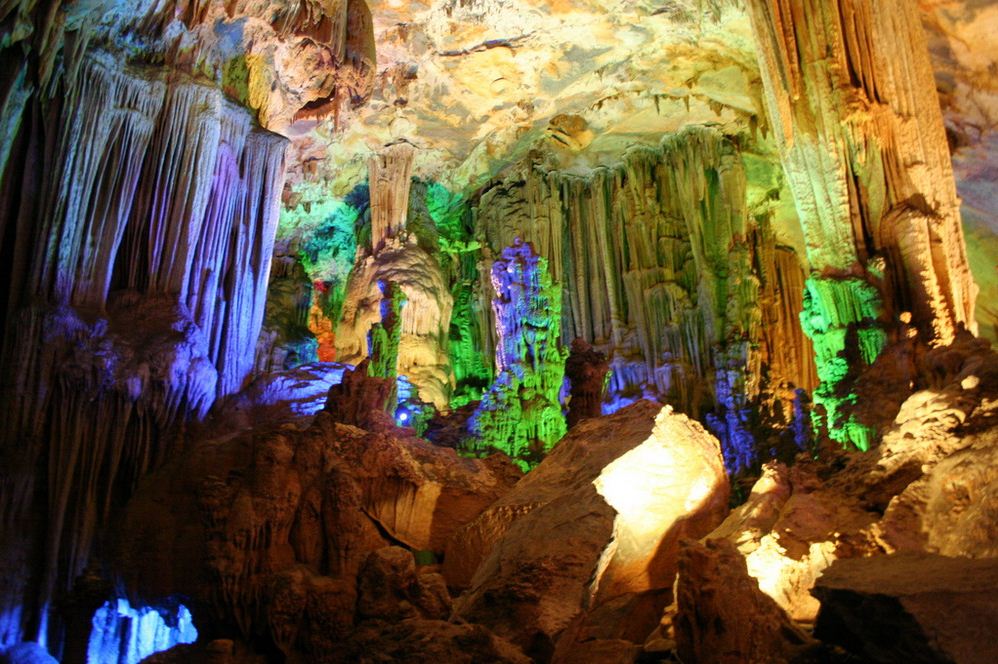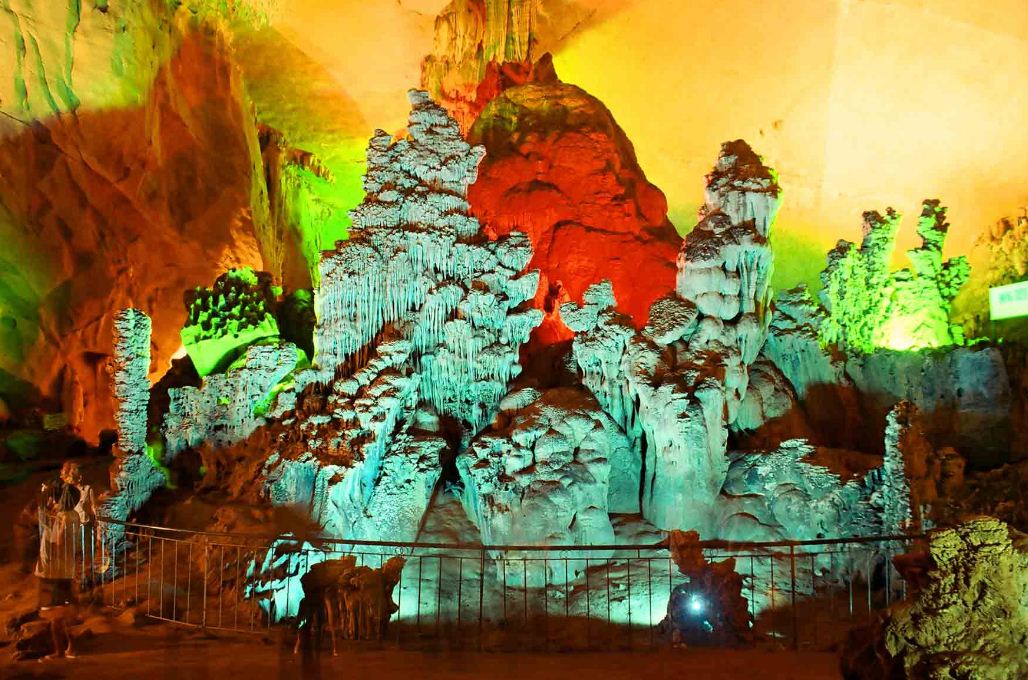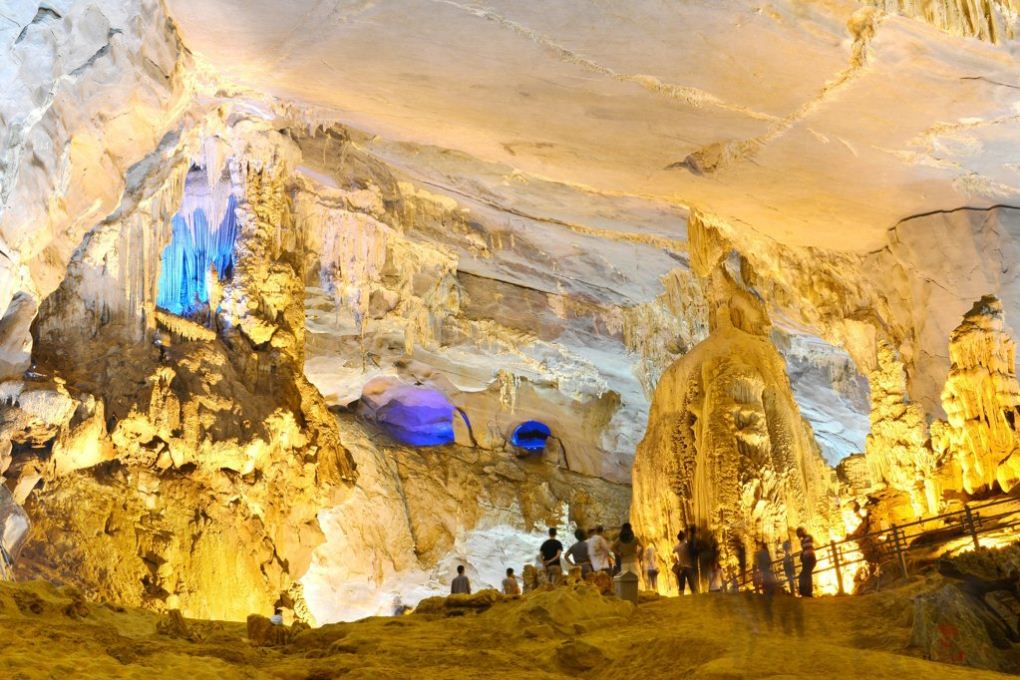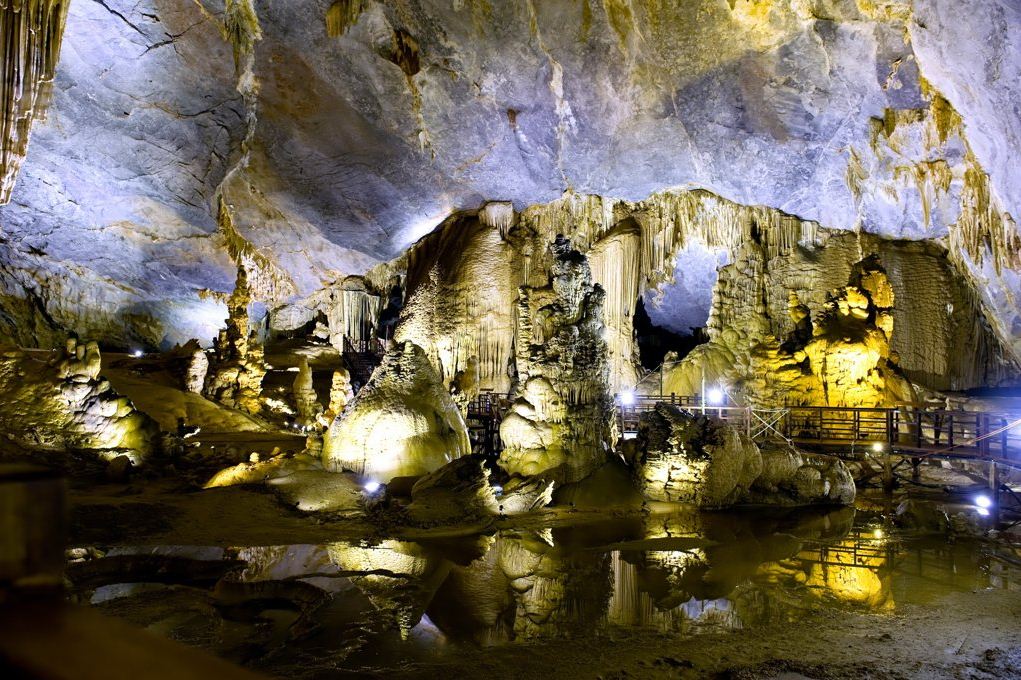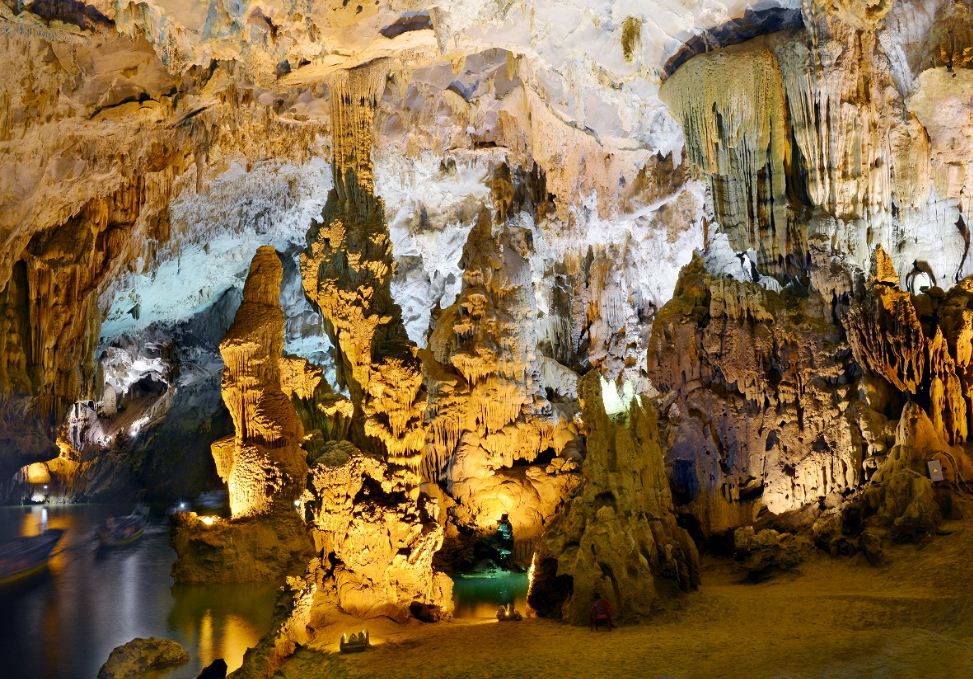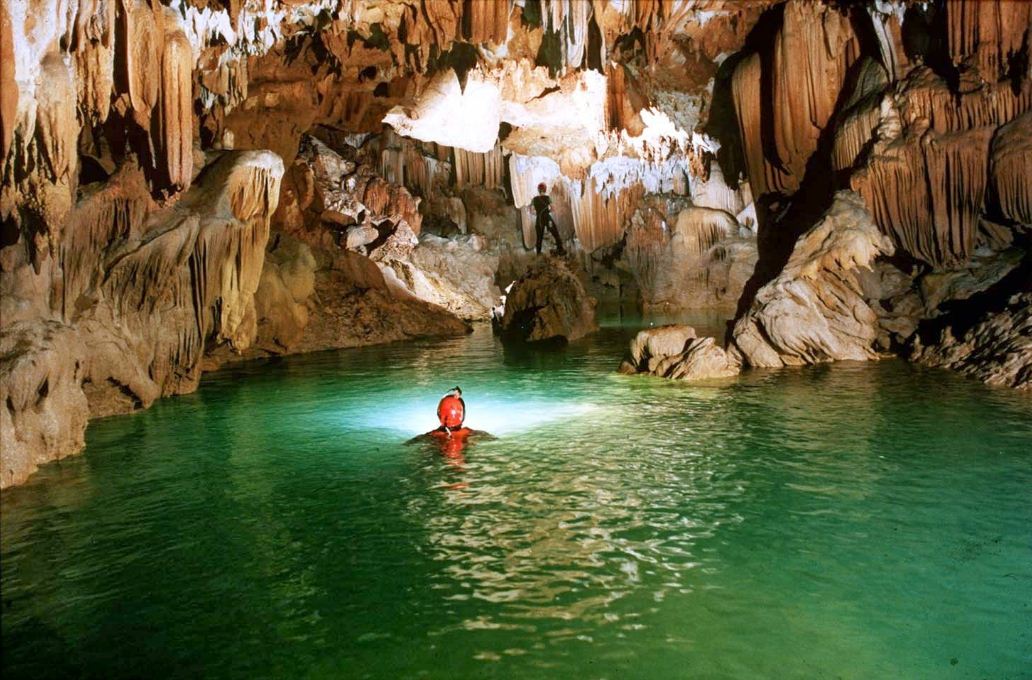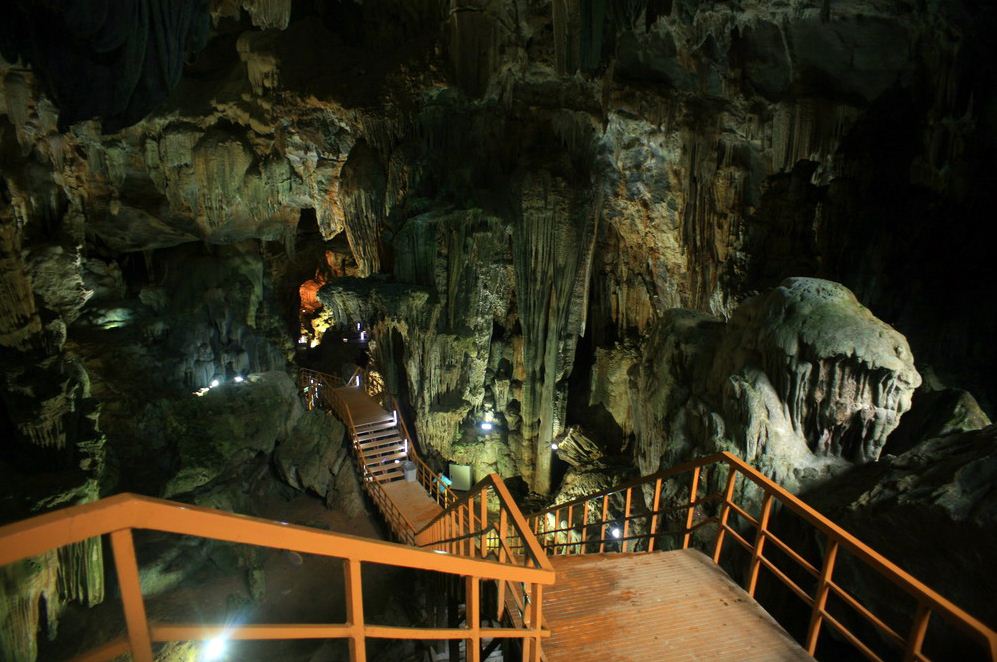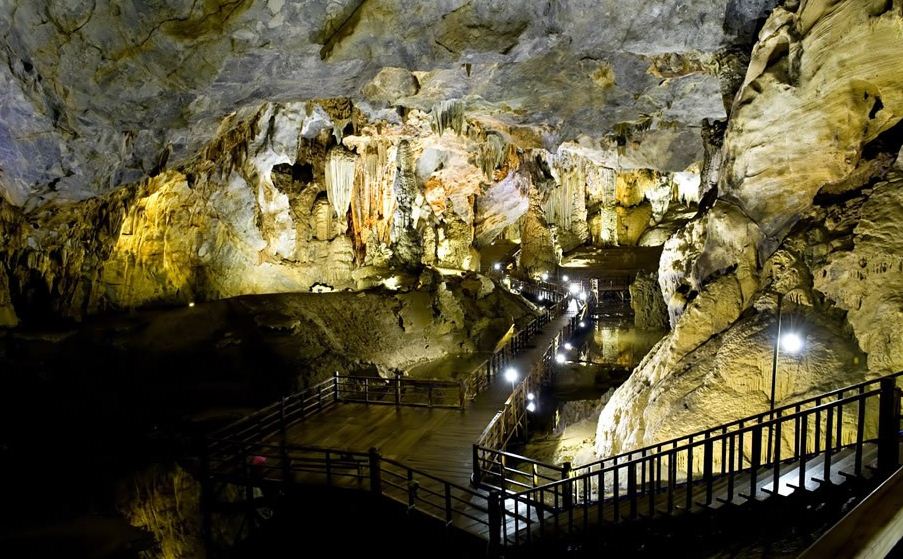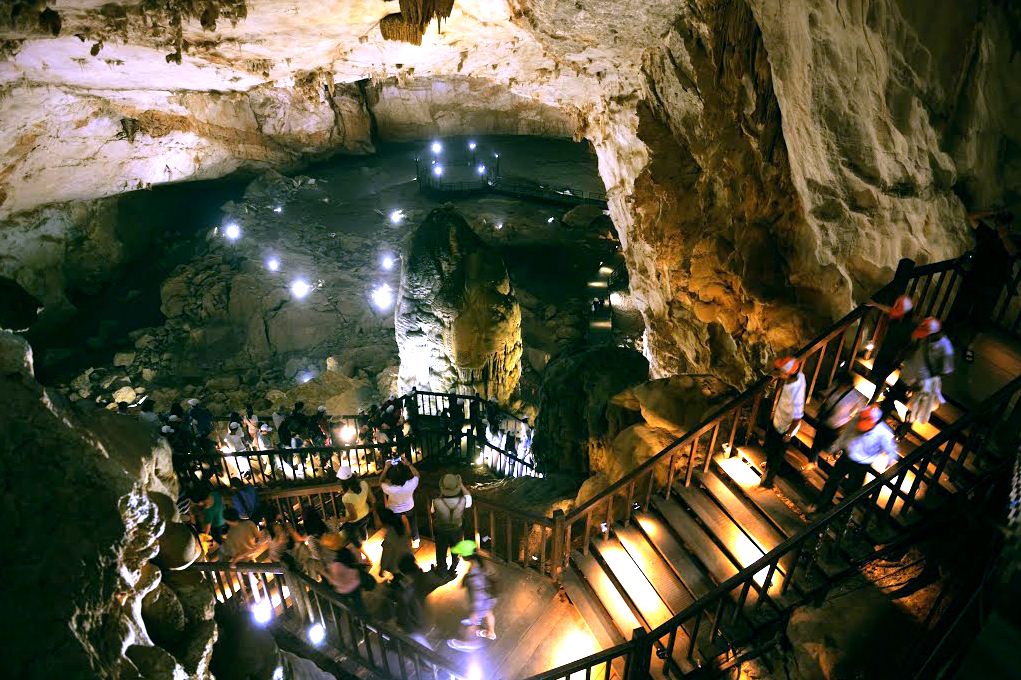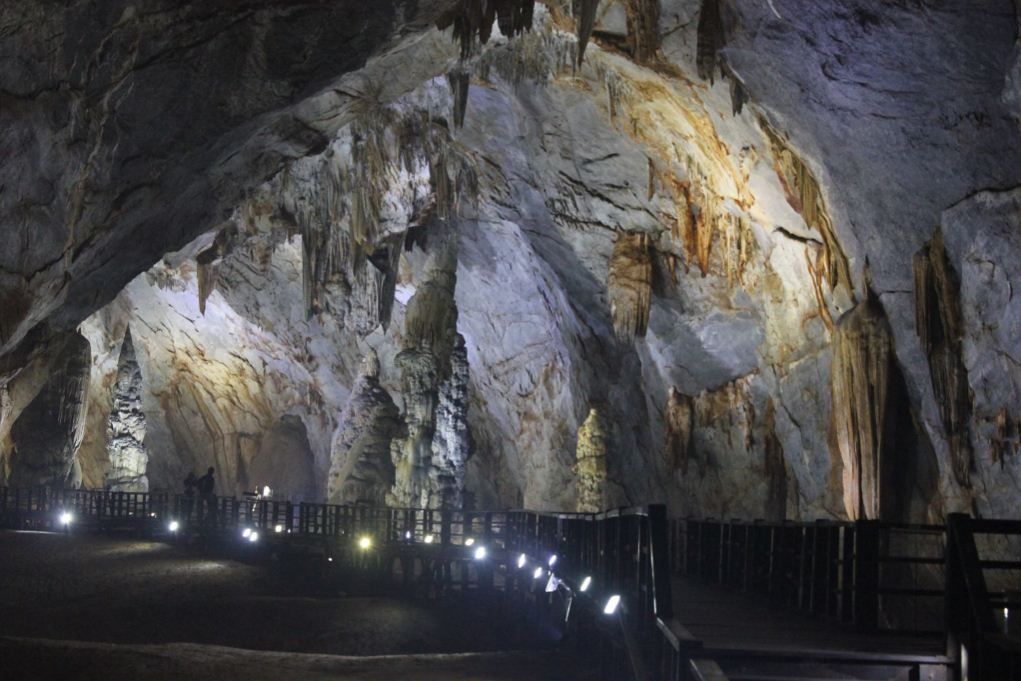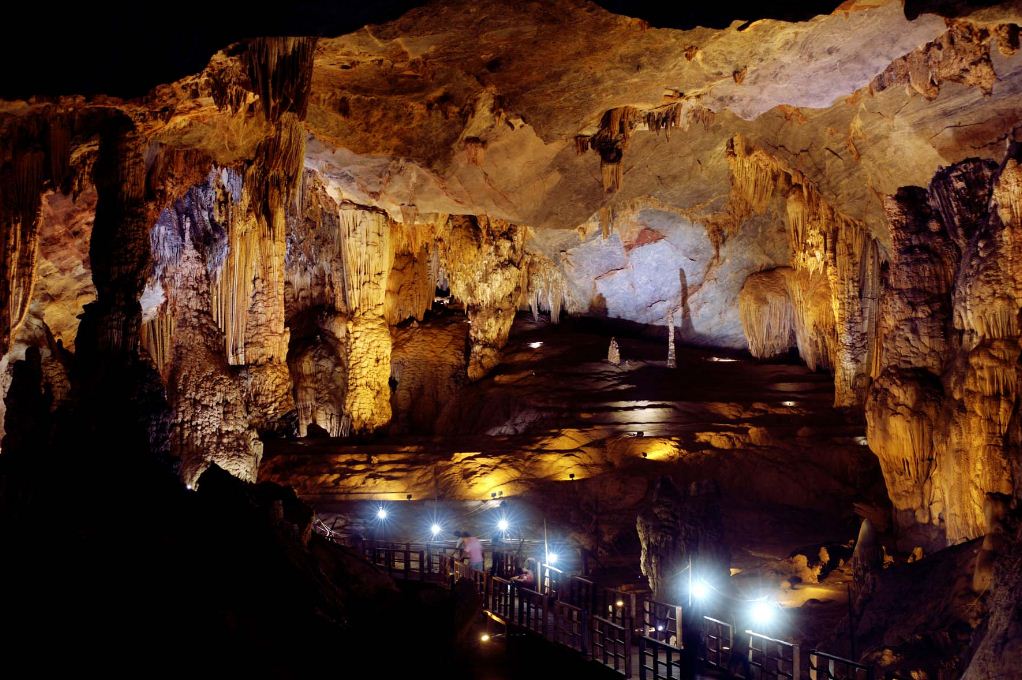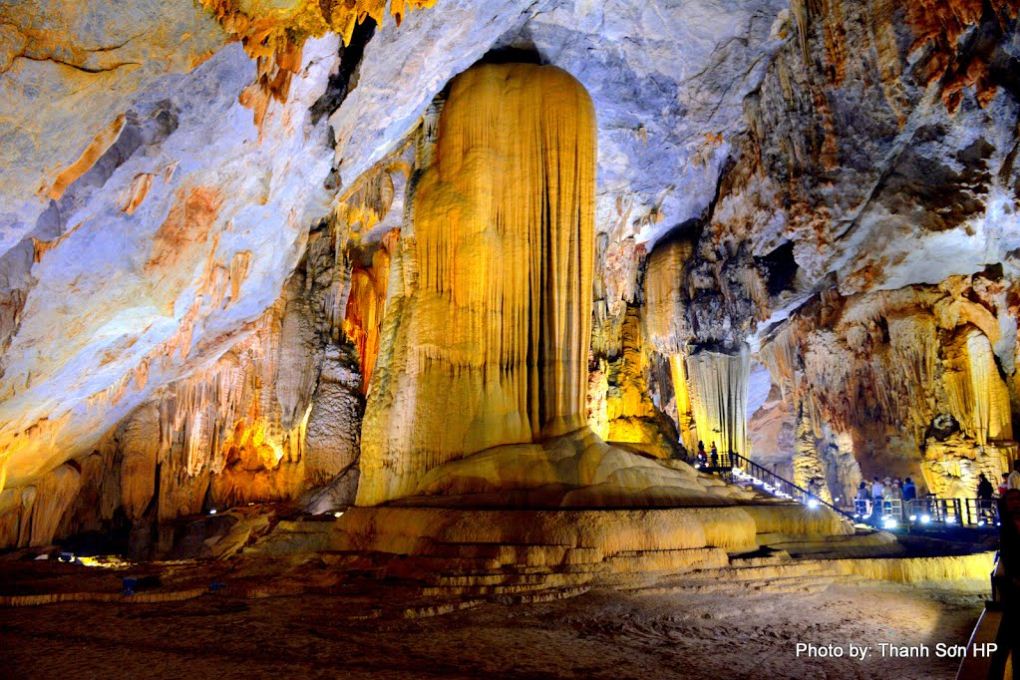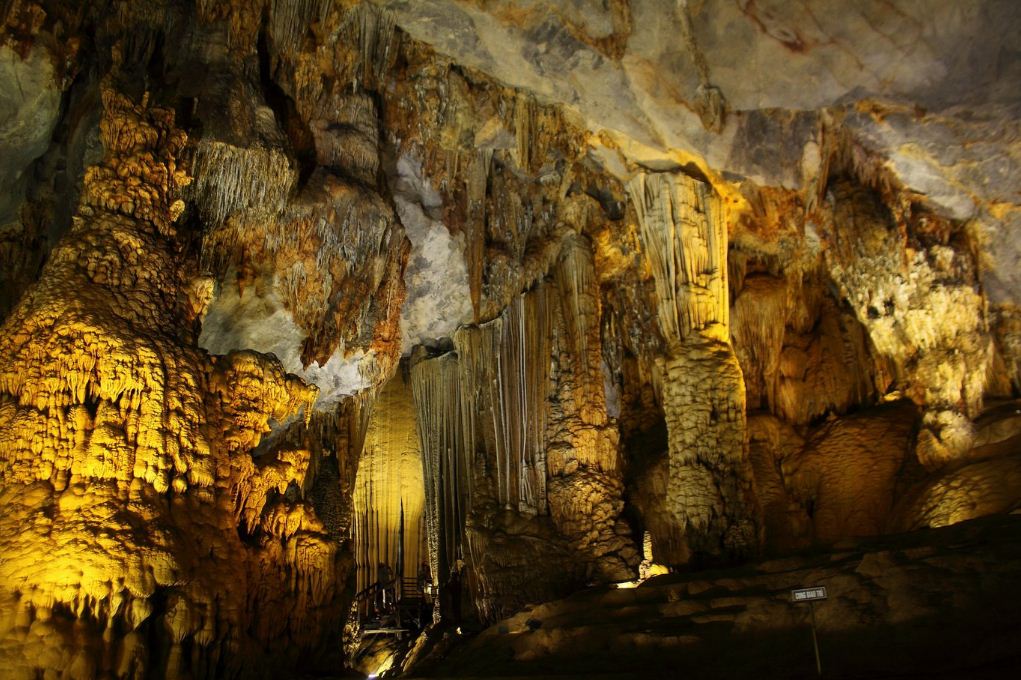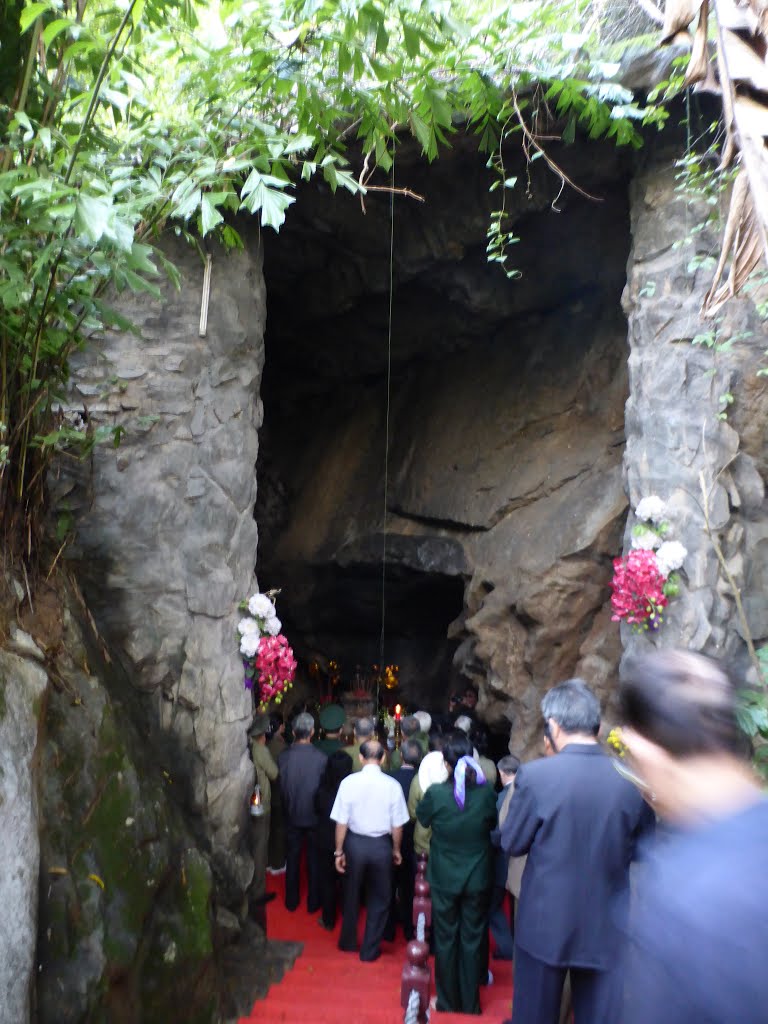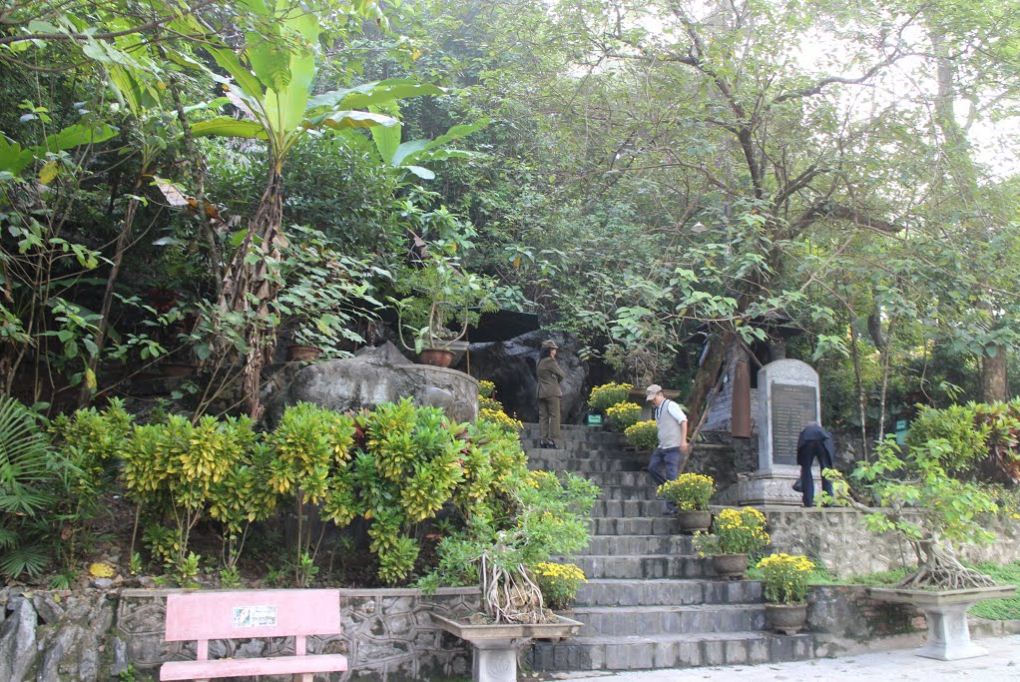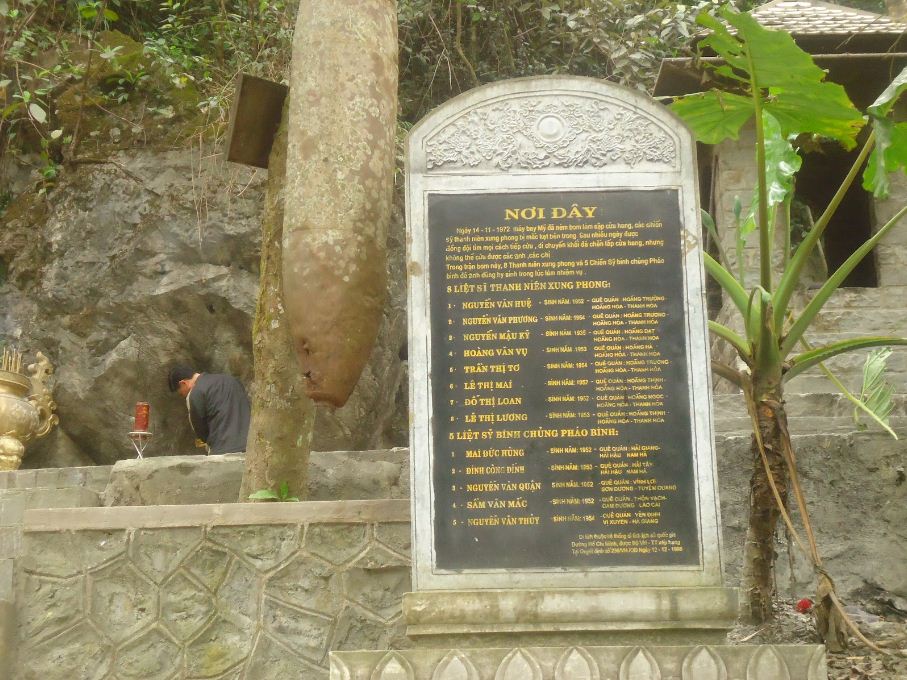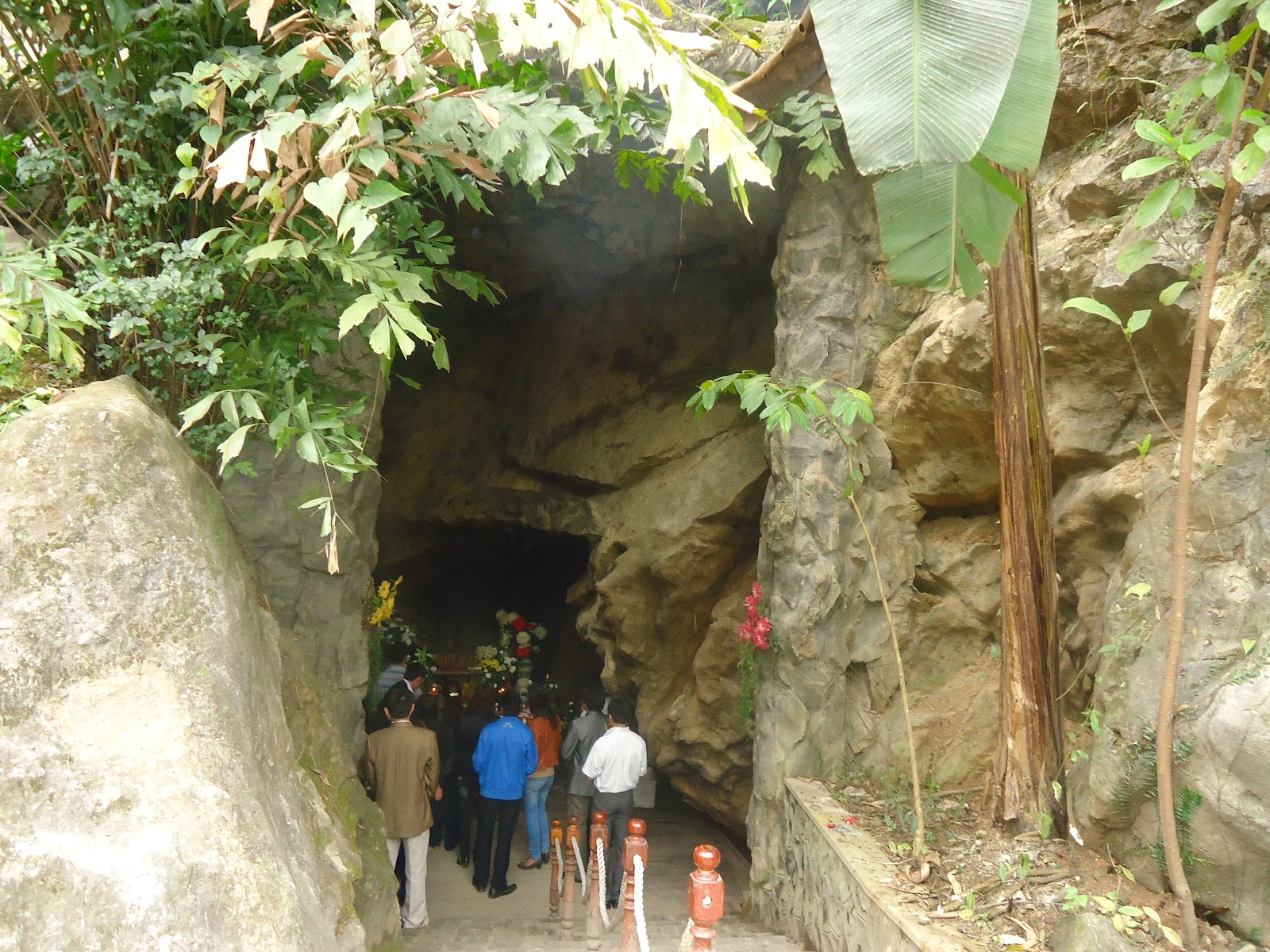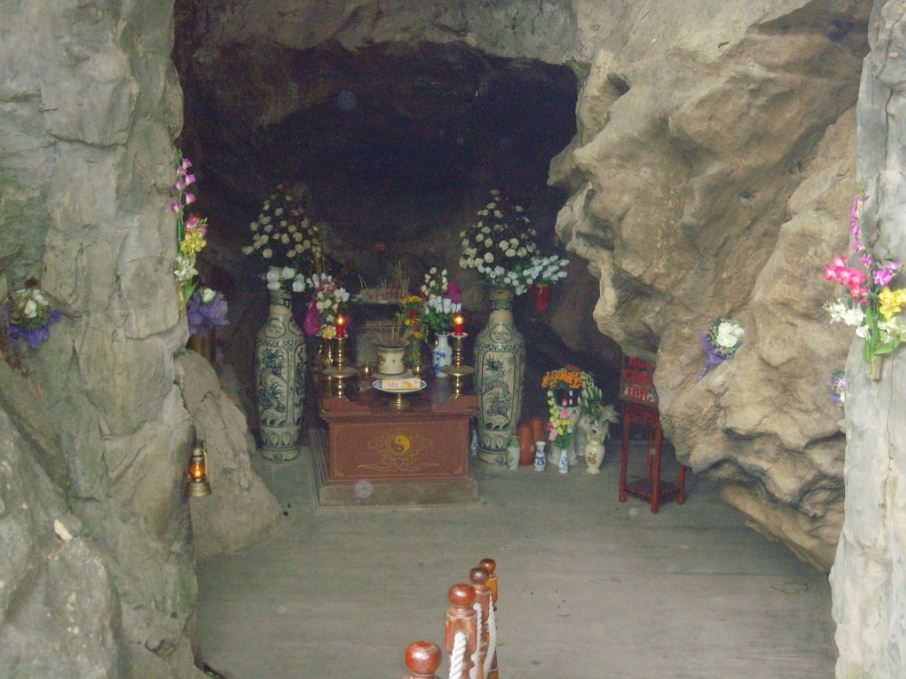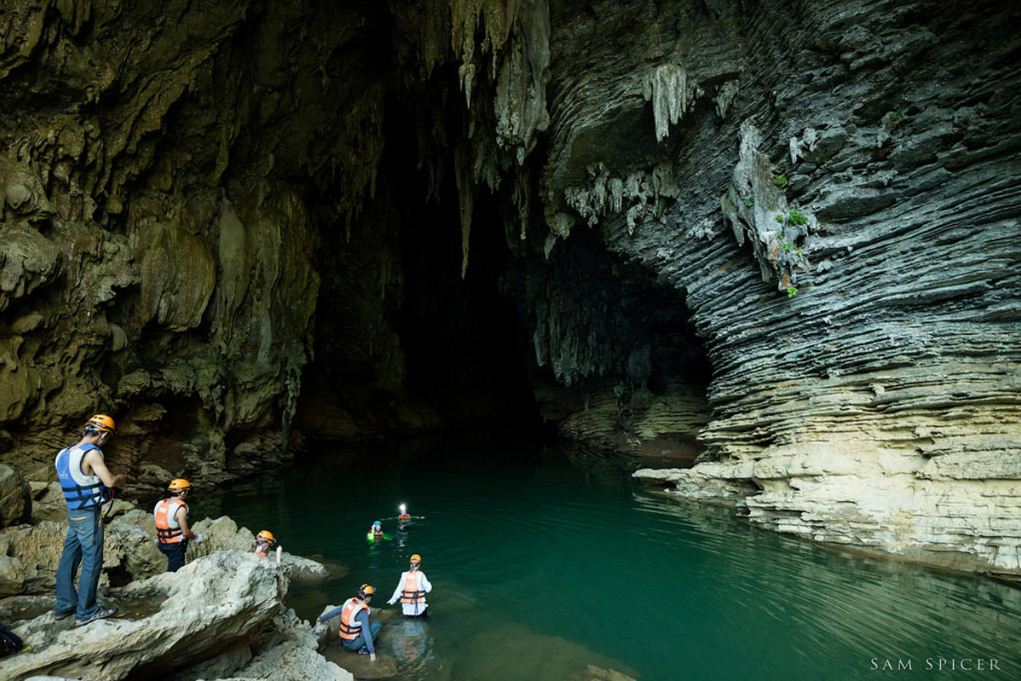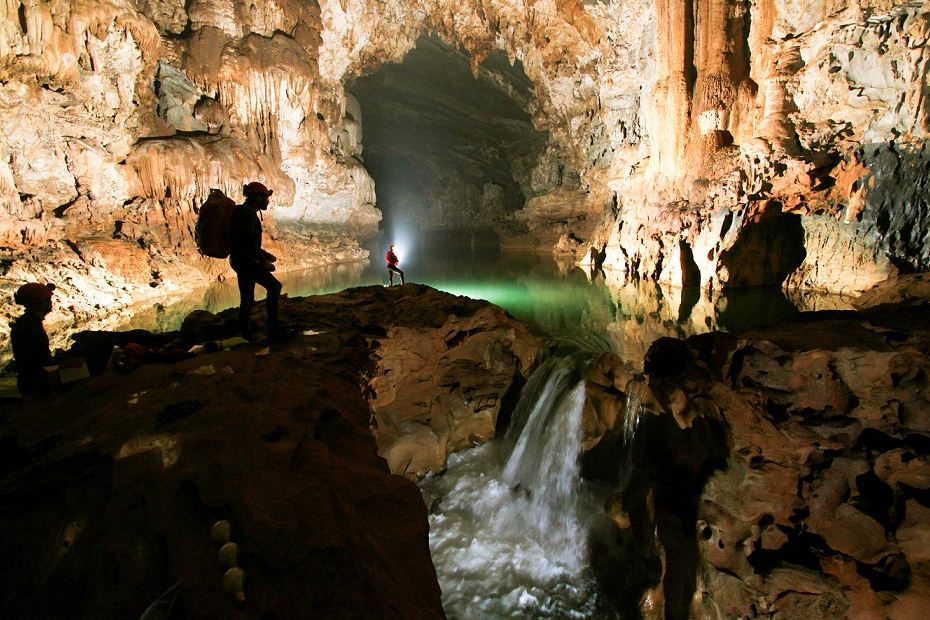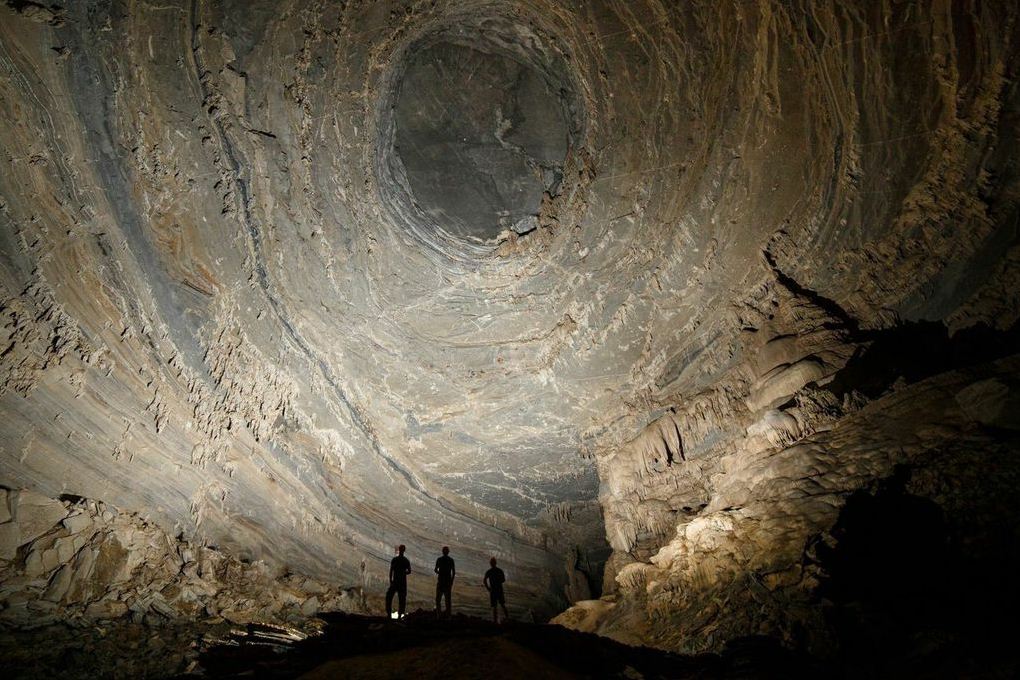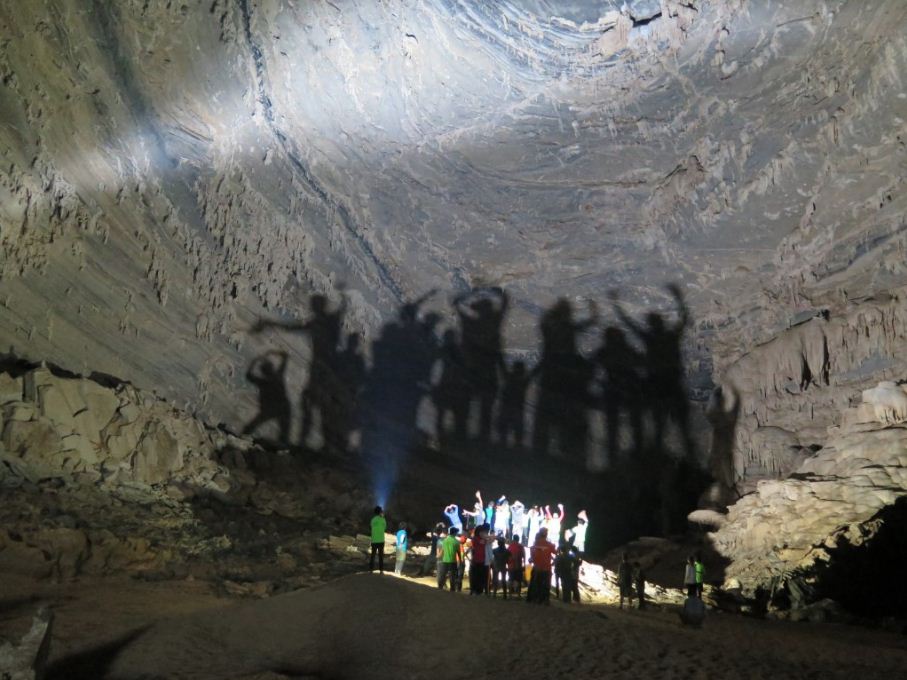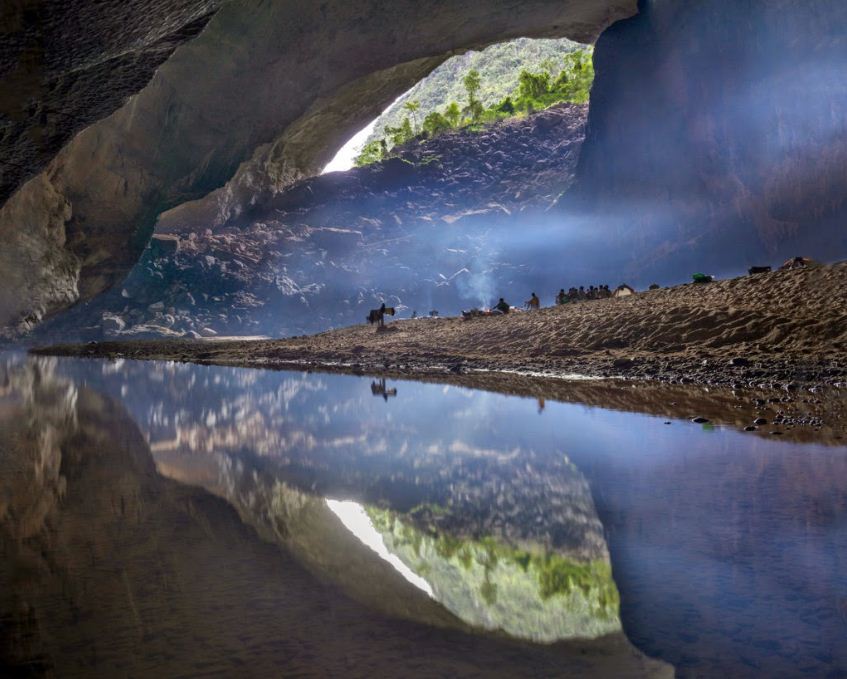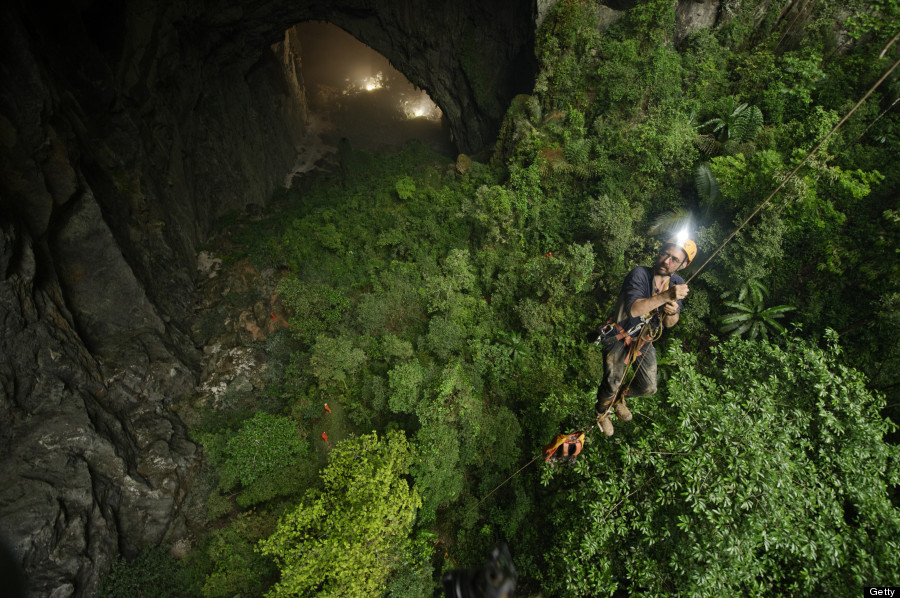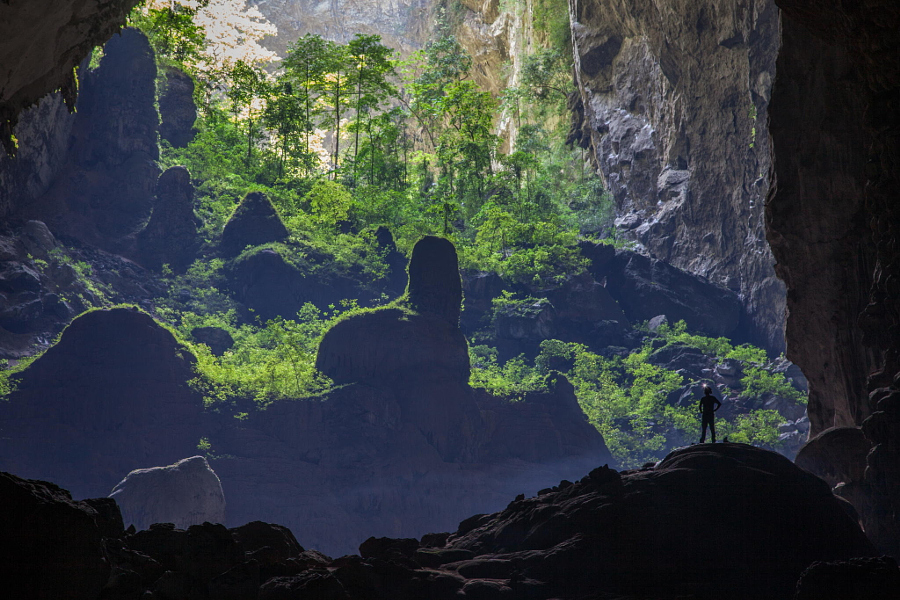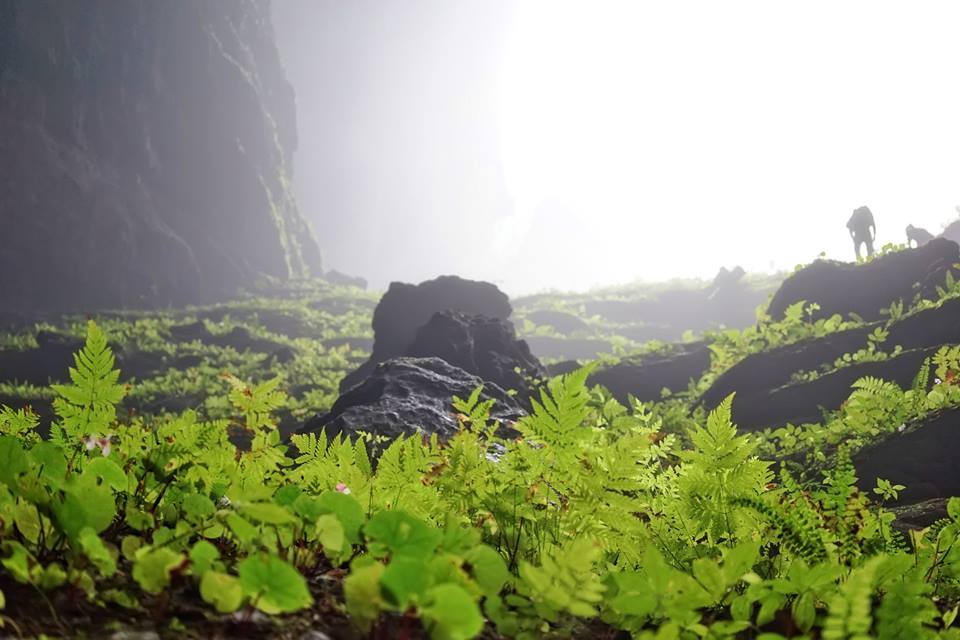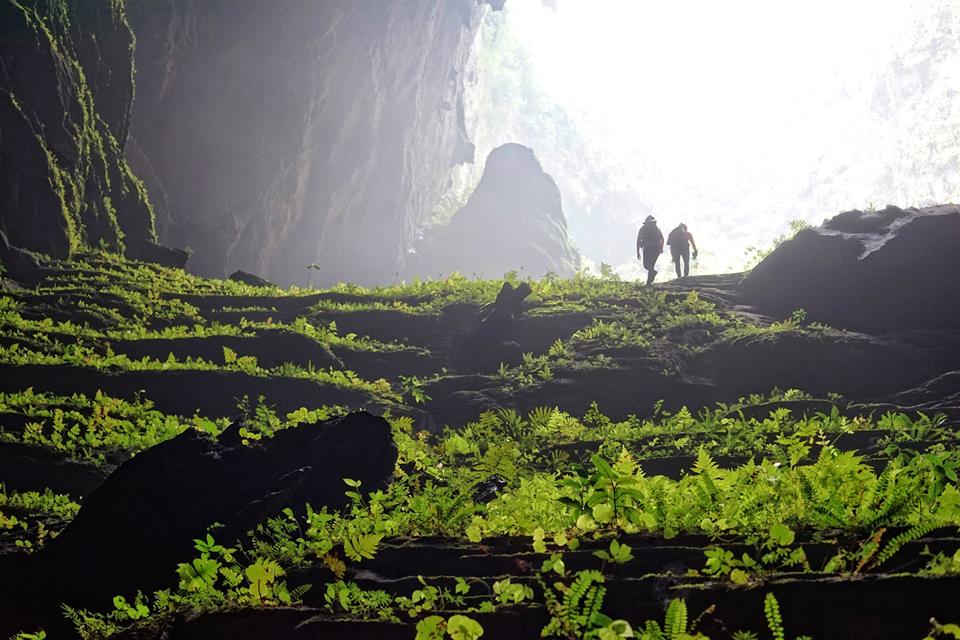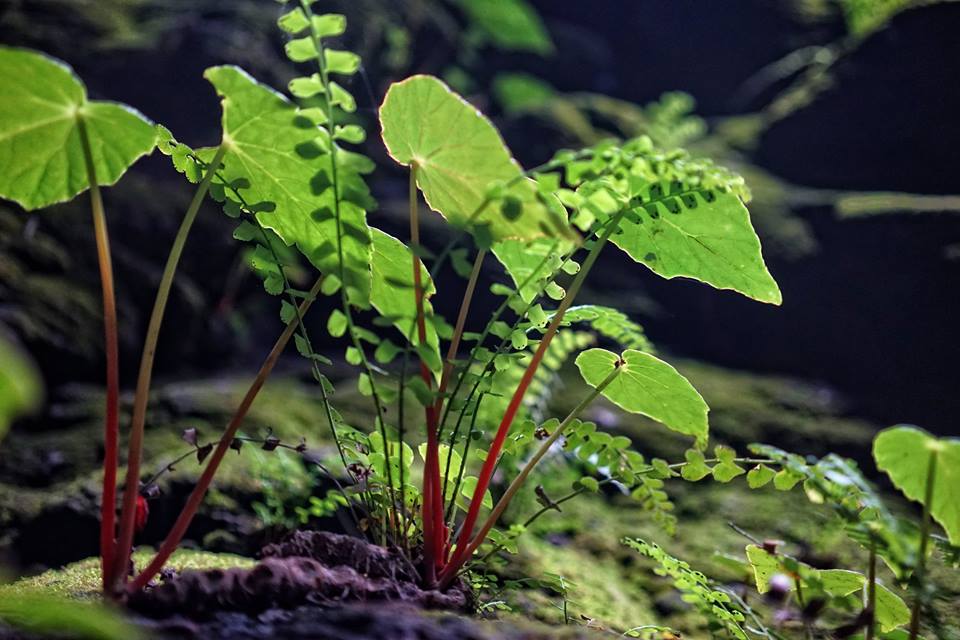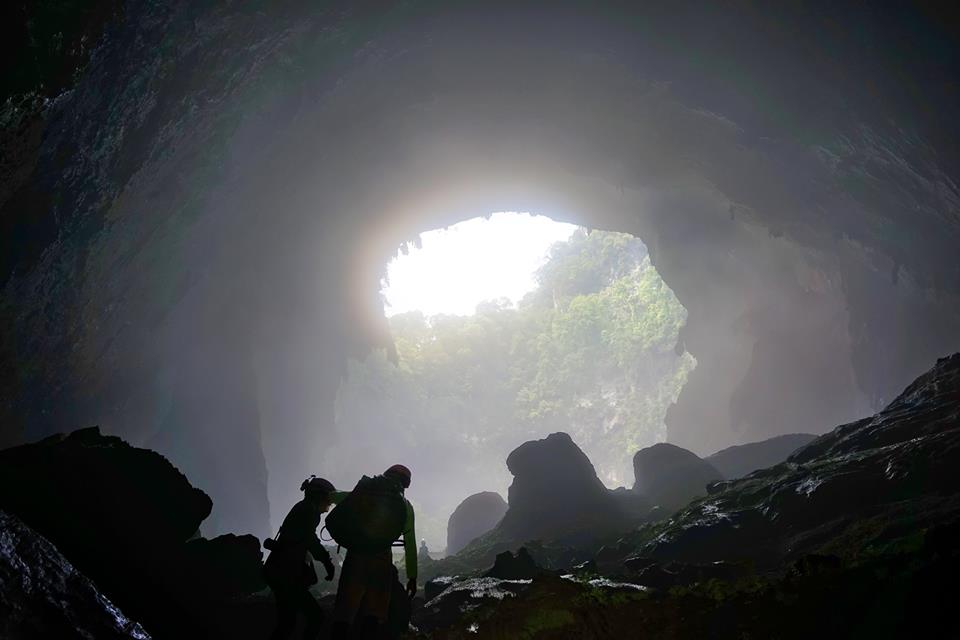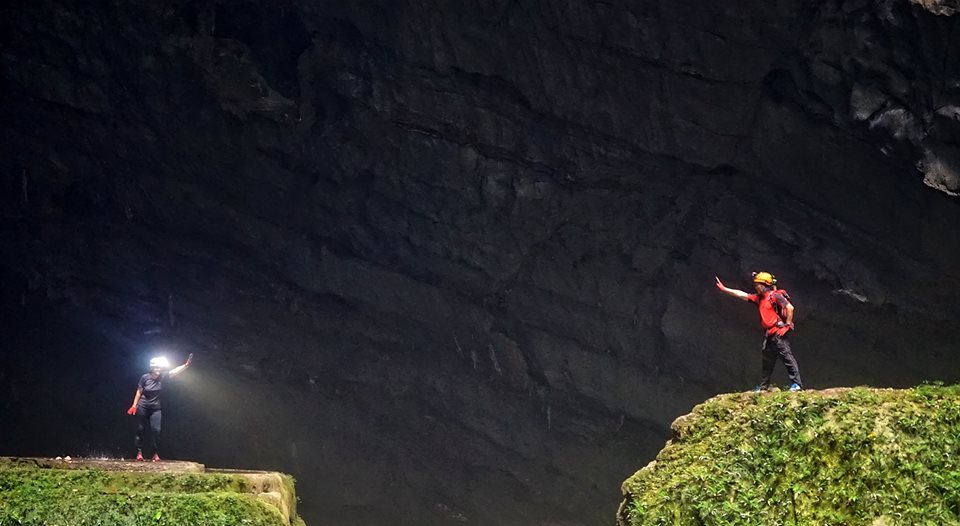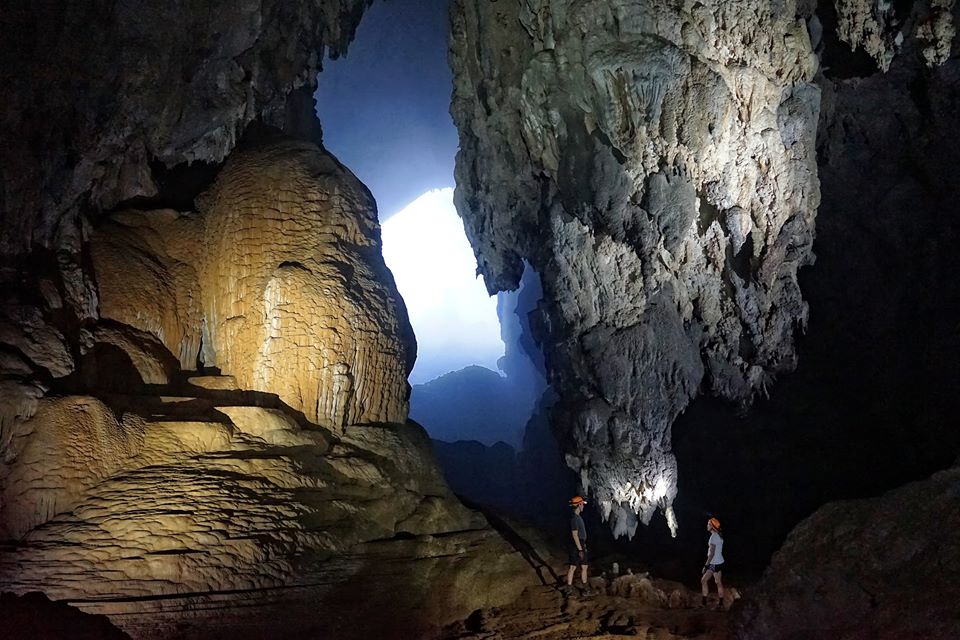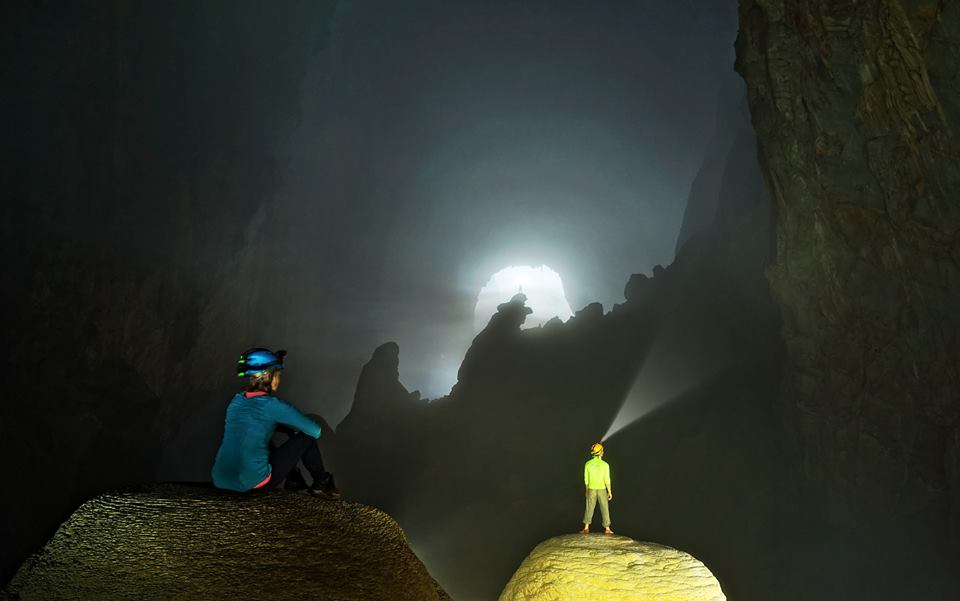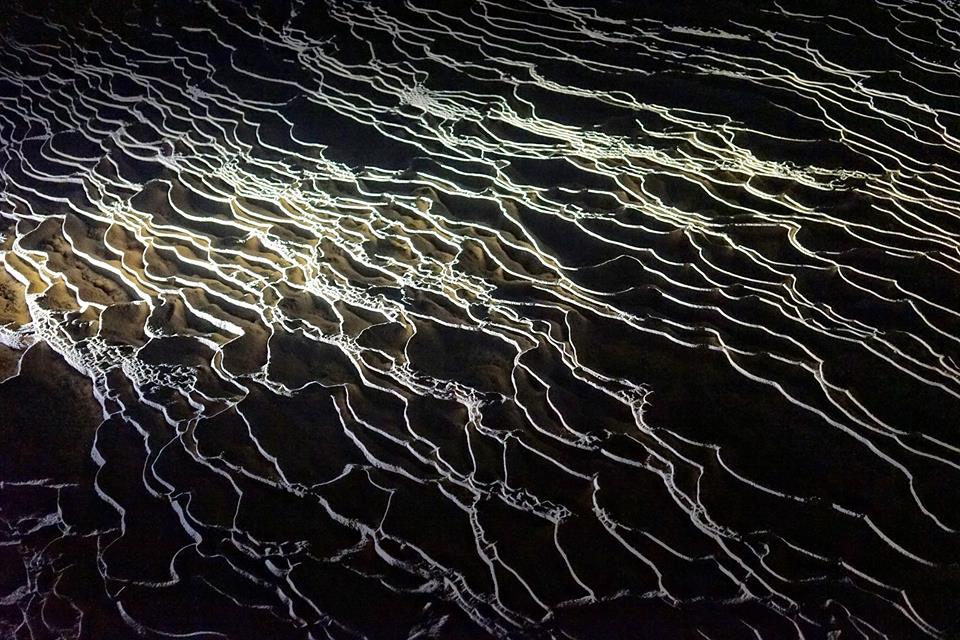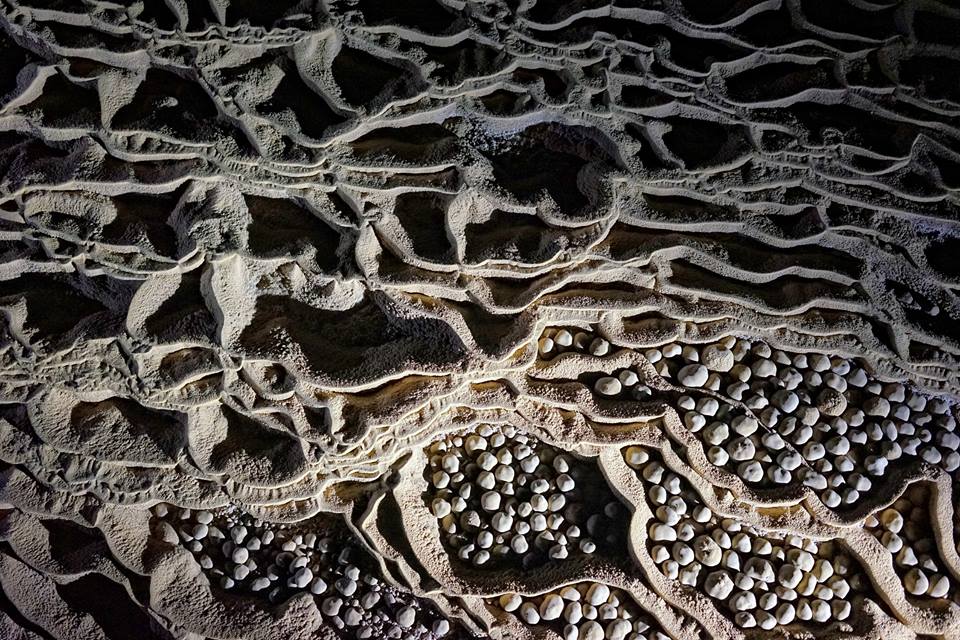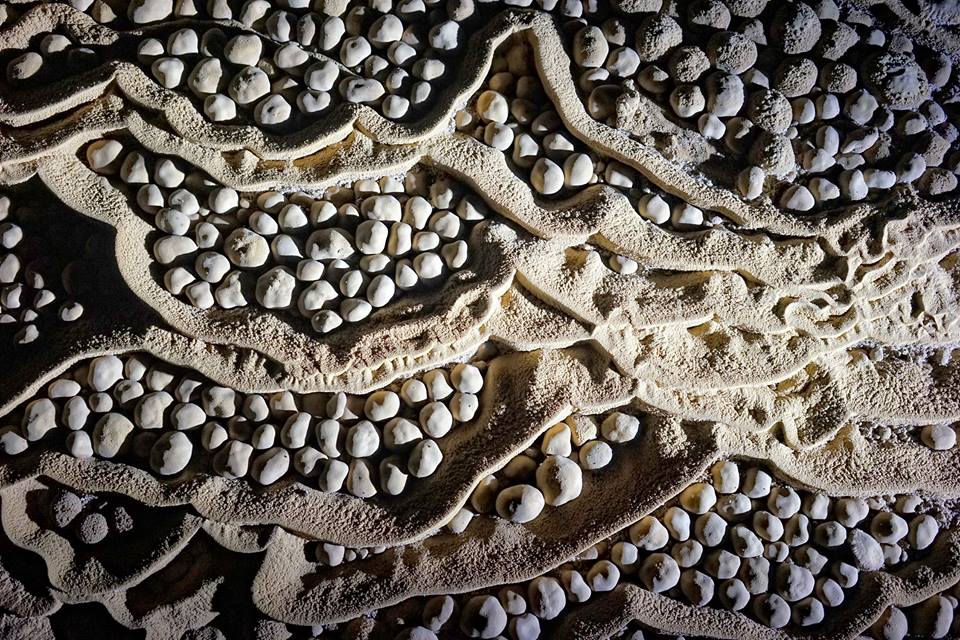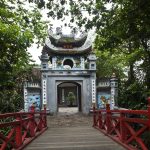Phong Nha Caves — 9 most beautiful caves you should discover in Quang Binh, Vietnam
Thanks to geographical features, climate, and the construction of the residential community in the process of social mobilization and development across many different times, which have developed a system of values regarding rich natural tourism that is appealing to Quang Binh province. Joining Focus Asia Travel leads to the names of nine caverns in Quang Binh province that are now being used for tourism (also known as the Phong Nha Caves system) that you may explore.
1. Phong Nha Caves
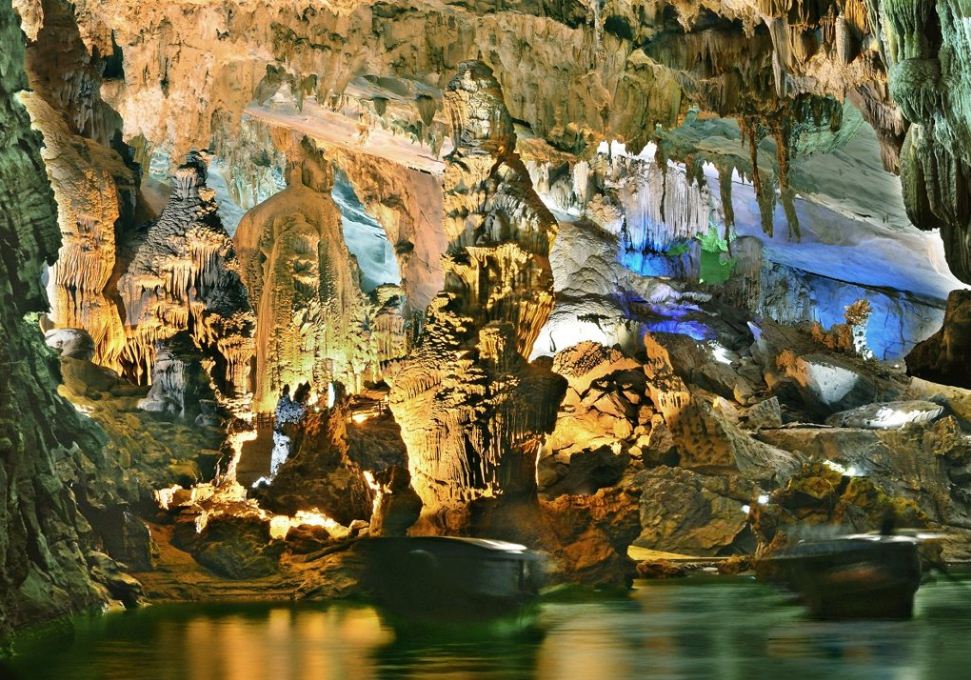
Phong Nha Caves, located in the Ke Bang limestone mountaineous region, Son Trach commune, Bo Trach district, Quang Binh province, 50 kilometers northwest of Dong Hoi city, is called “Nam Thien De Nhat Dong” (meaning “the most beautiful cave in Vietnam”) and is surrounded by tropical woods.

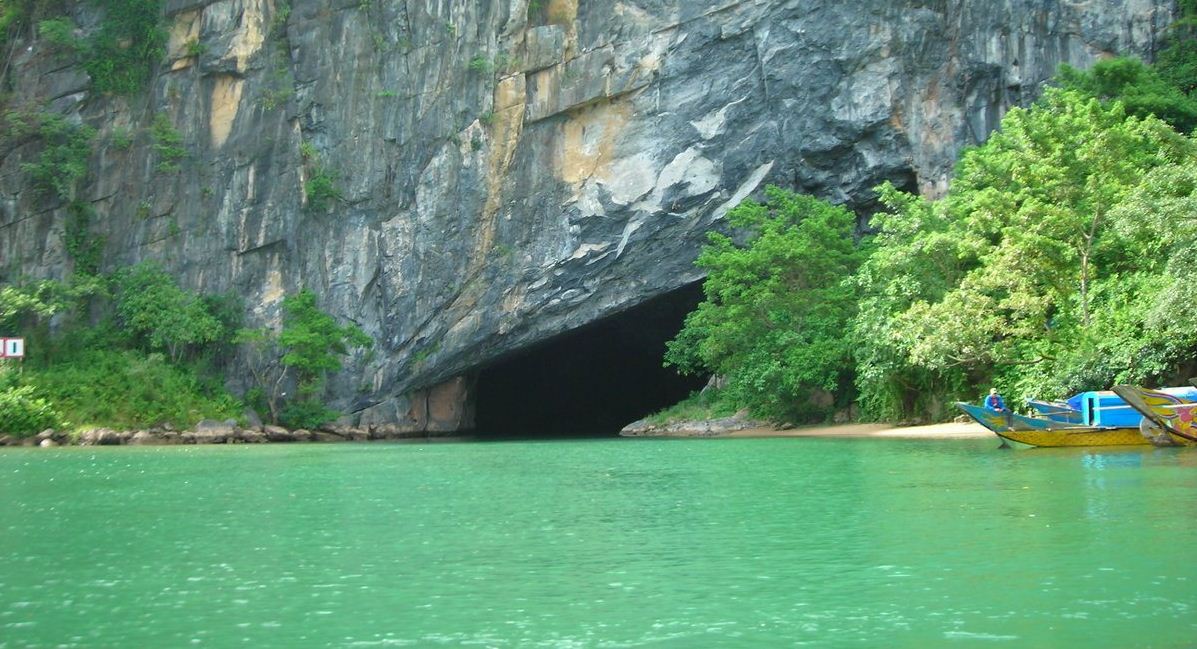
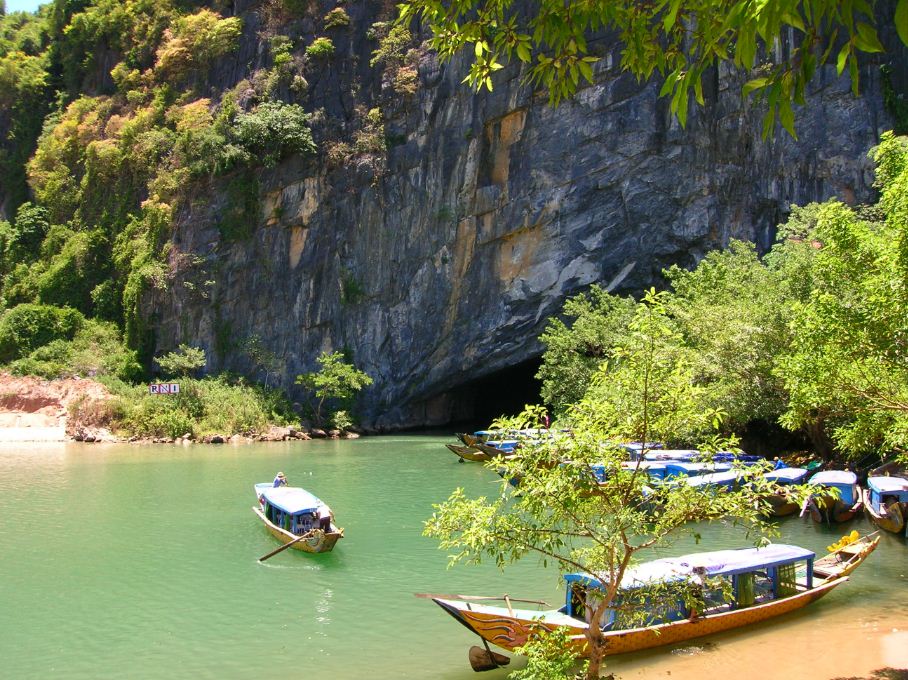
You’ll have to travel more than 30 minutes from Son River to get to Phong Nha Caves. With a length of 7,729m, a depth of 83m, and a height of 50m, the cave has several branches and big and small caves, including Bi Ki cave, Tien cave, and Cung Dinh cave. This is a sort of subterranean cave in the highlands where water runs, with numerous distinctive stalactites. According to legend, the stalagmites draping down from the cave’s entrance inspired the lyrical name “Phong Nha,” which translates as “the wind blows through the teeth.”
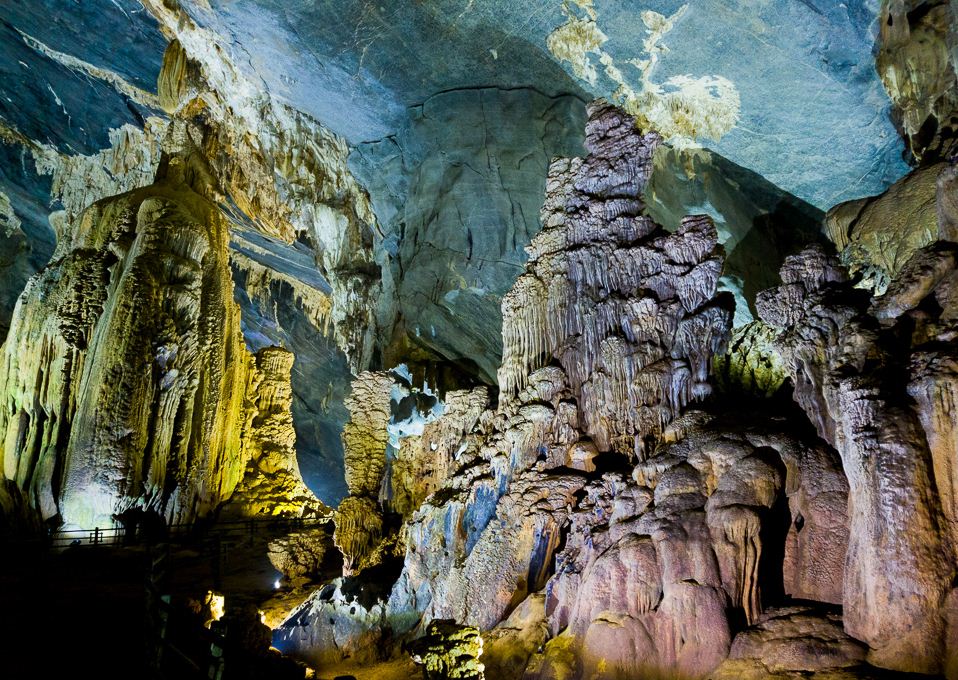
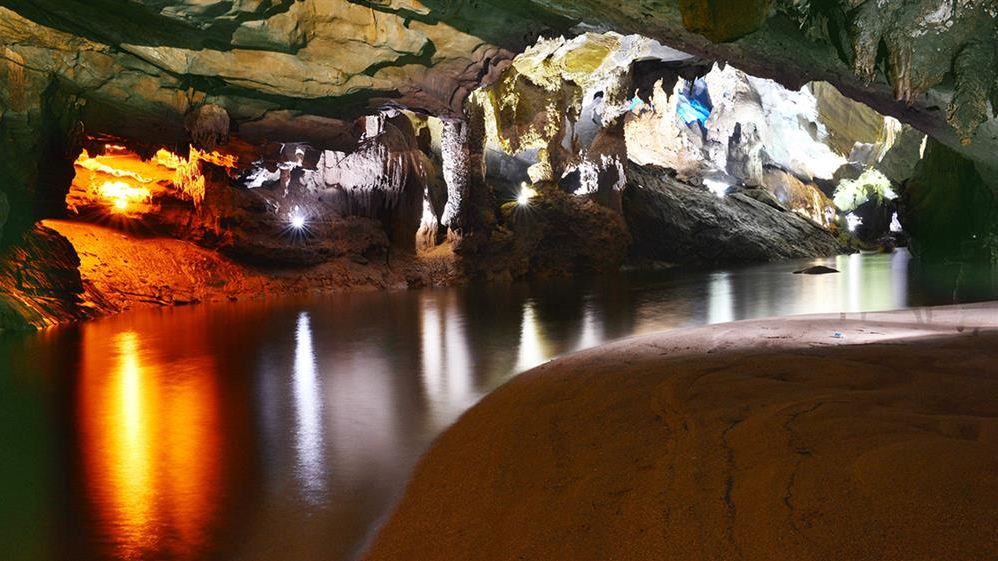
2. Tien Son Cave, Tiên Sơn Cave (Fairy Cave) or Dry Cave
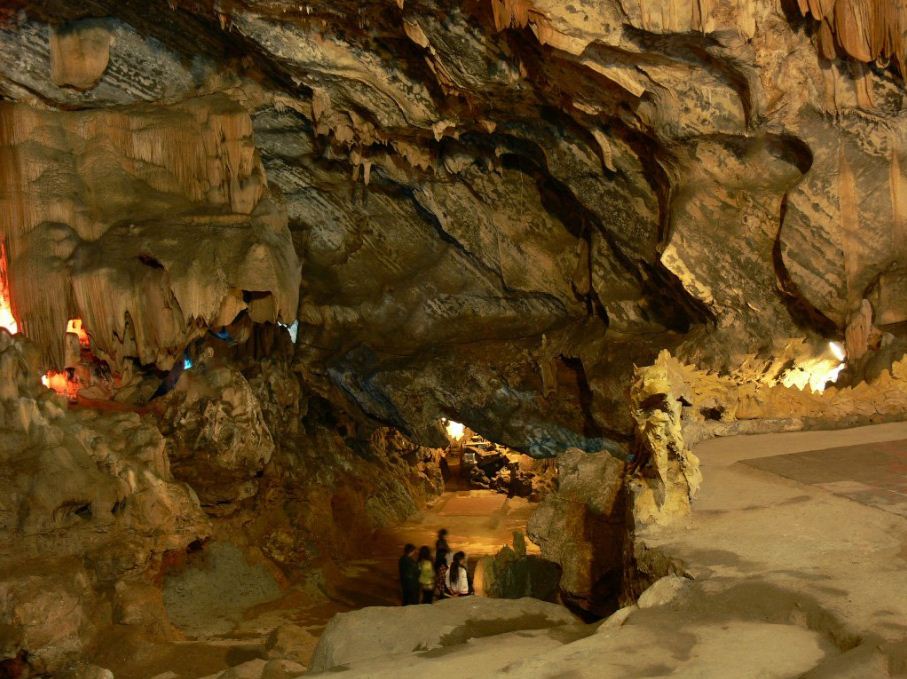
Tien Son Cave, also known as Dry Cave, is a magnificent and well-known cave in Phong Nha – Ke Bang National Park. The route to Tien Son Cave is a winding road in the midst of the mountain, approximately 200 meters above sea level. Tien Son Cave’s entrance is around 1,000 meters from the entrance of Phong Nha Cave; the cave was found in 1935. Due to its fairy and magical beauty, locals originally named this cave Dong Tien (Fairy Cave). Tien Son Cave was renamed “Dry Cave” after the discovery of Phong Nha Cave, which is a kind of water cave.
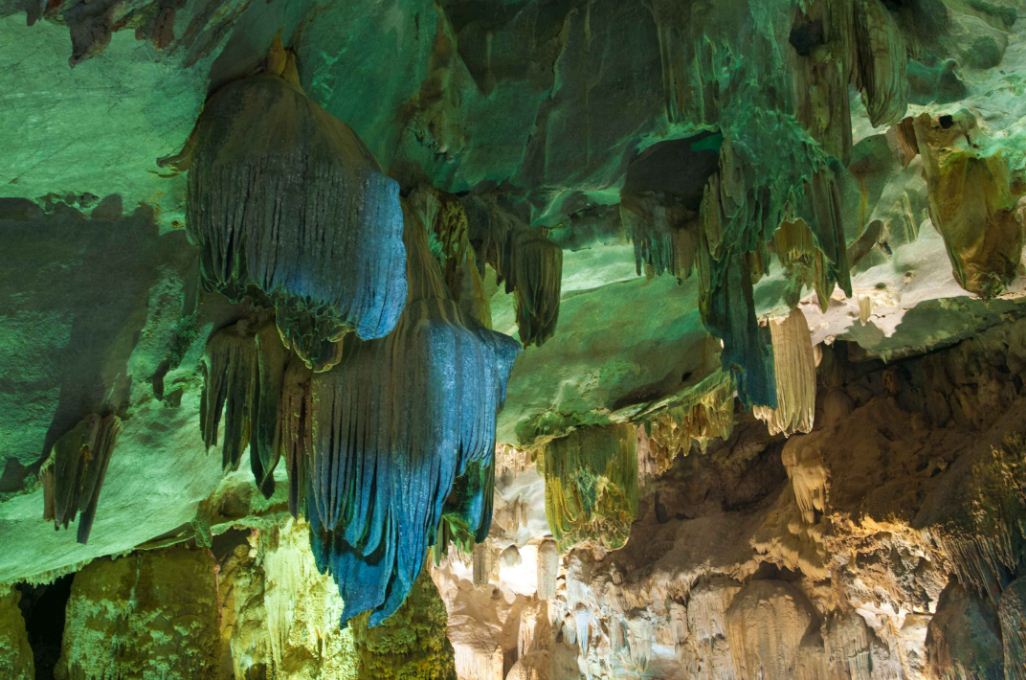
Tien Son Cave is 980m long and, while not linked, Tien Son Cave and Phong Nha Cave are part of the same cave system. Tien Son Cave, with hundreds of multicolored stalactites, is known as the “castle of stalactites.”
3. Thien Duong Cave (Paradise Cave)
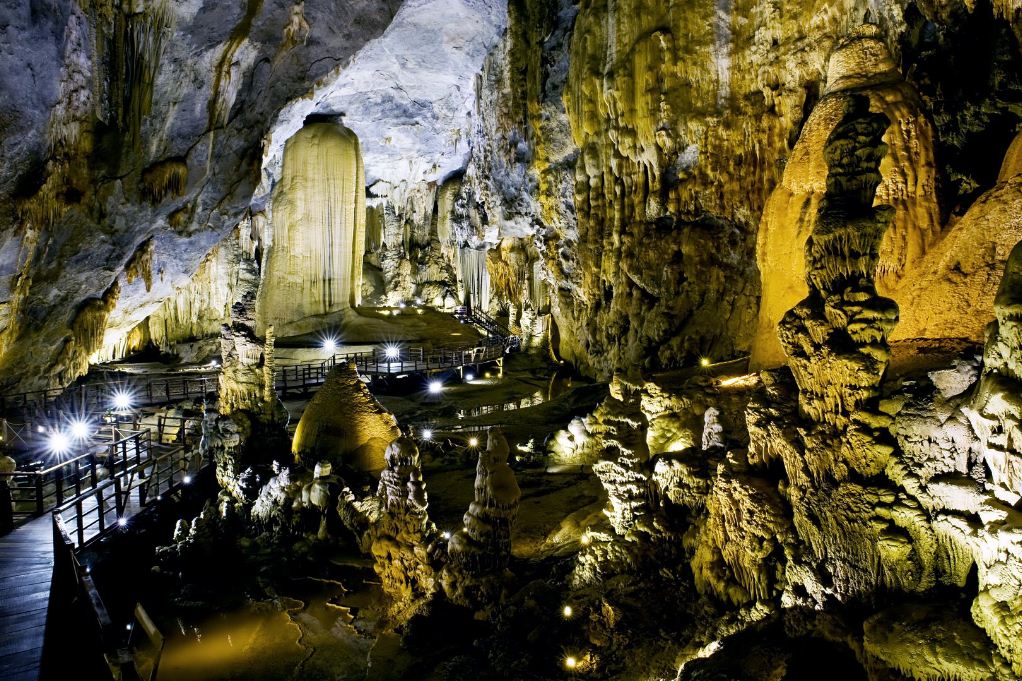
Was dubbed the “Underground Imperial Palace”, Dong Thien Duong (Paradise Cave) is one of the most magnificent and magical wonders in the world. The cave lies hidden deep inside the UNSECO World Natural Heritage — Phong Nha-Ke Bang National Park, an ancient cattical terrain, dating from 350 to 400 million years ago.
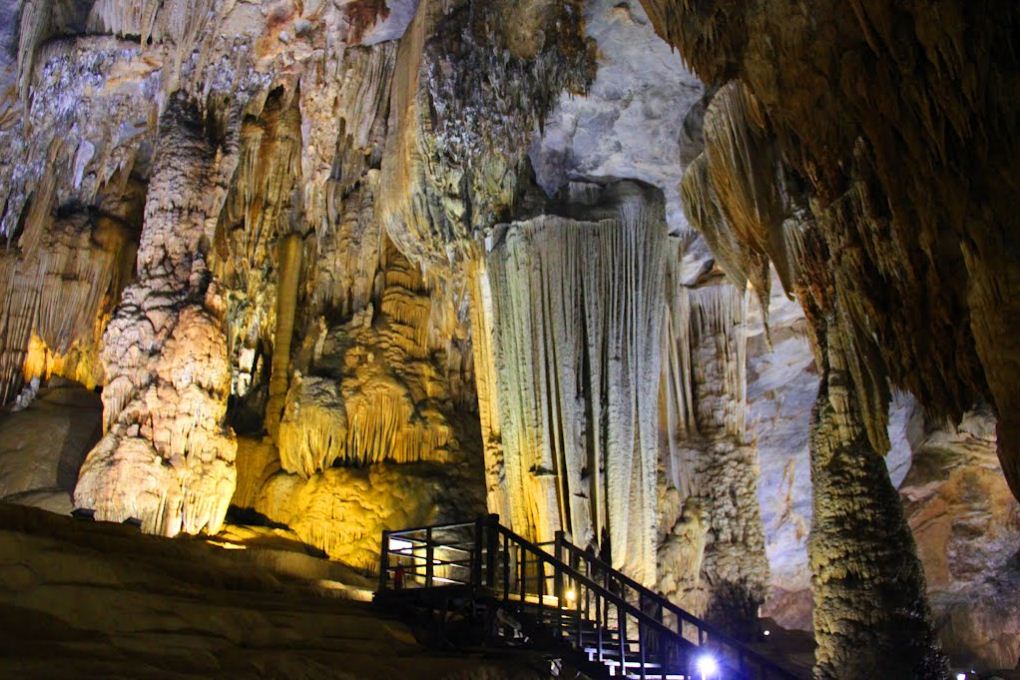
Thien Duong Cave is located at Km 16, from the western edge branch of Ho Chi Minh road about 4km, in Son Trach commune, Bo Trach district, Quang Binh province, 70 km far from the central of Dong Hoi city to the northwest, 25km far from Phong Nha Cave, the transportation is very convenient. The Paradise Cave entrance fee is about 120,000 to VND 250,000 (£3.70-£7.80 / $5.60-$11.80).
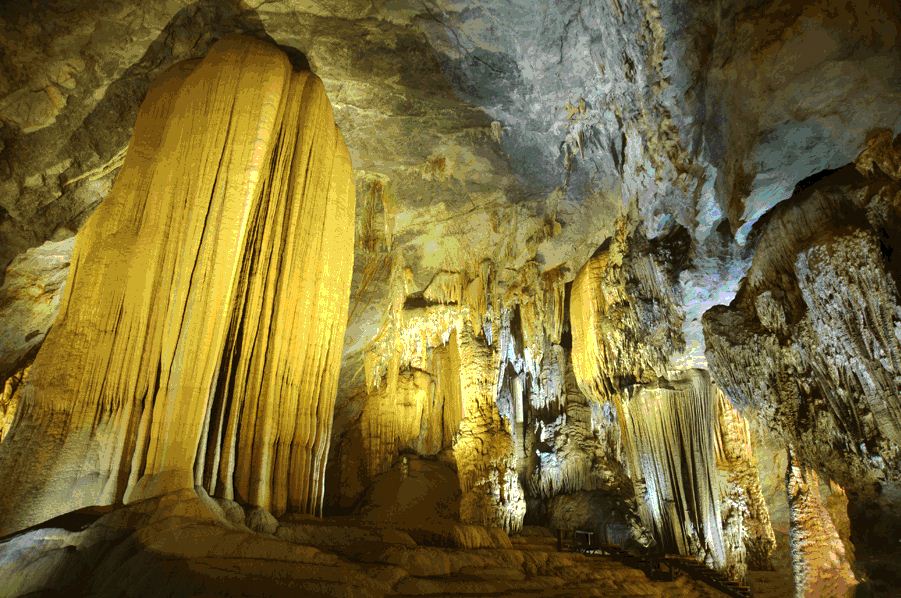
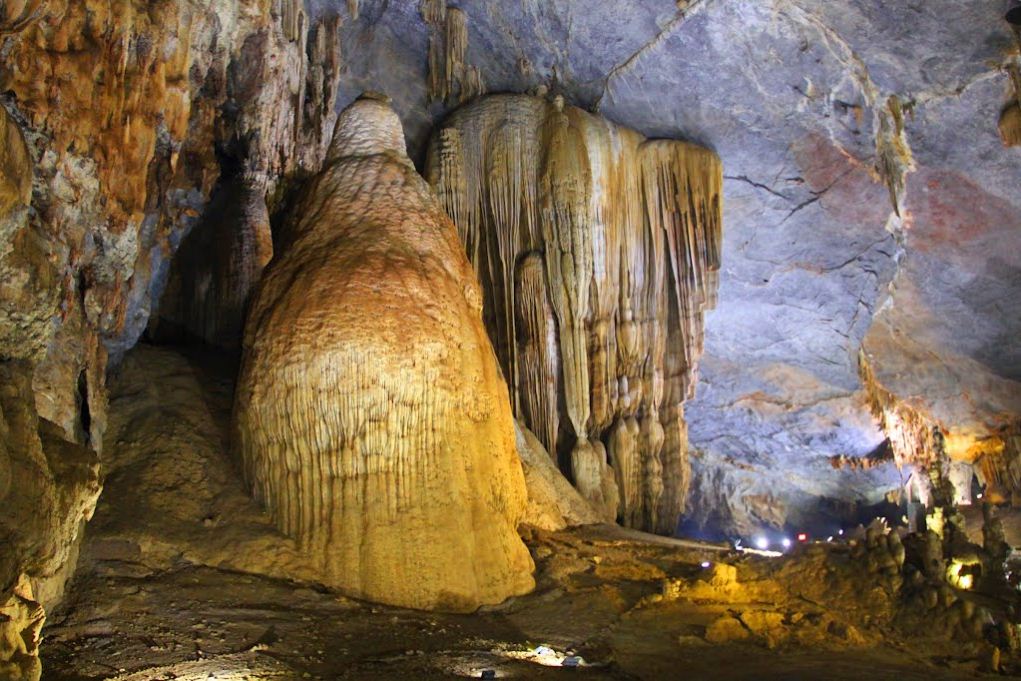
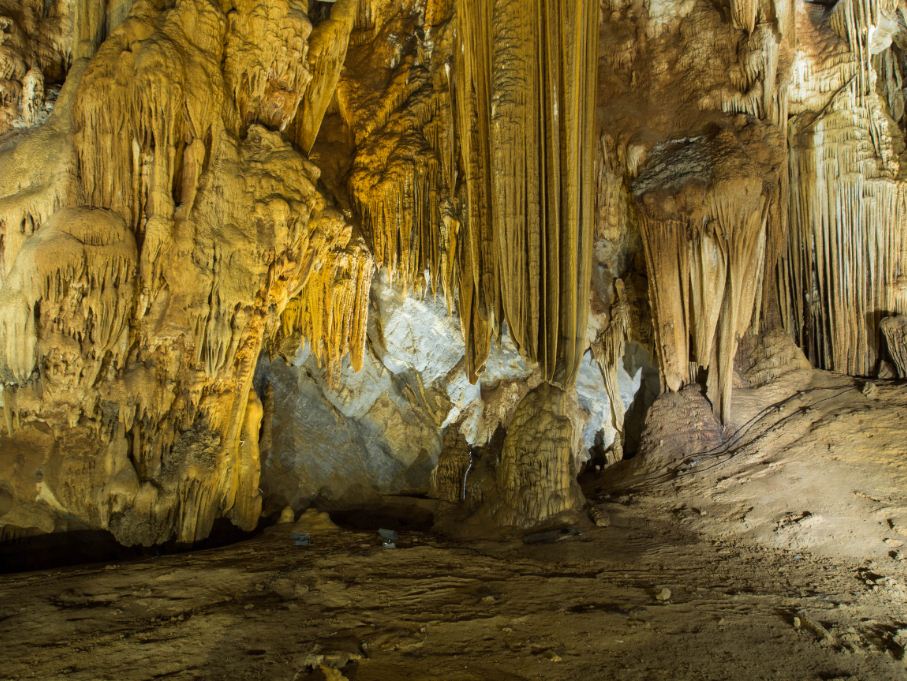
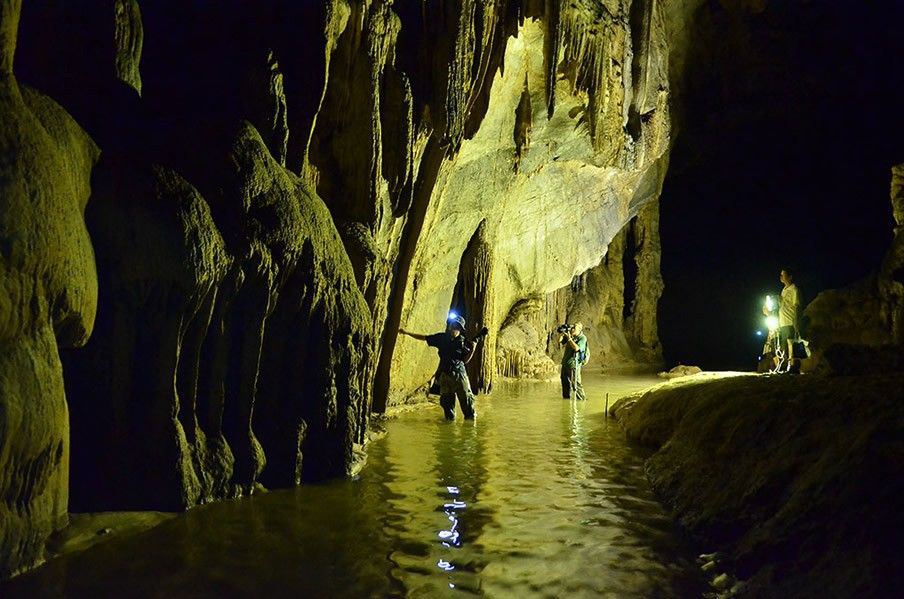

4. Dark Cave (Hang Toi)

Dark Cave was found very early by local people during the years of war against the US and was utilized as a shelter by the locals and army to avoid bombings. The British Royal Cave Research Association examined, plotted, and measured Dark Cave in 1992, revealing a horizontal length of 5,558m, a depth of 80m, and a height of 50m.
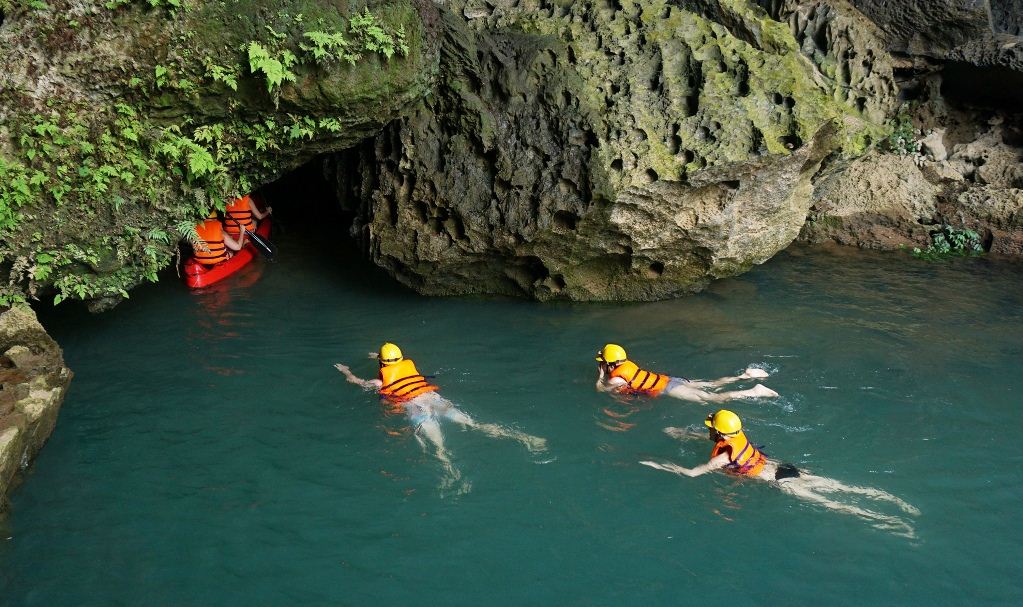
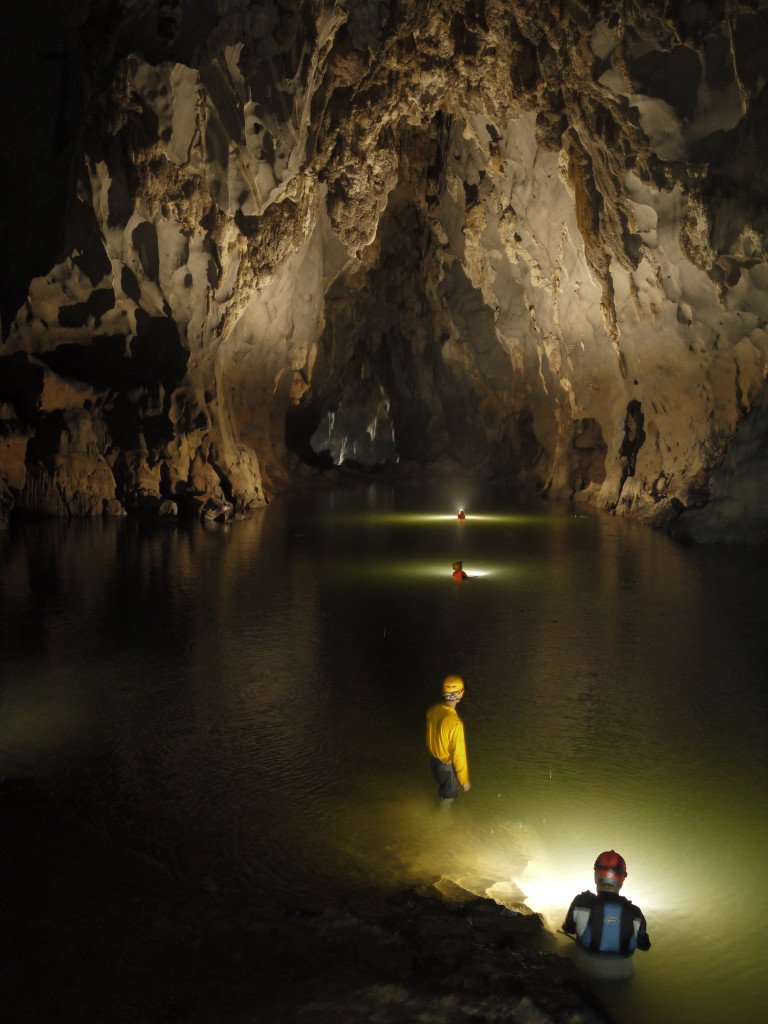

Dark Cave owns the exotic beauty, more strange than all else caves. Although it is said “dark cave”, but not really dark at all. The light from the outside cleverly creeps into the cave, illuminate the cliffs with a few waves of the sun light, reflecting the shimmering water surface. All like the most beautiful natural painting of the scene.
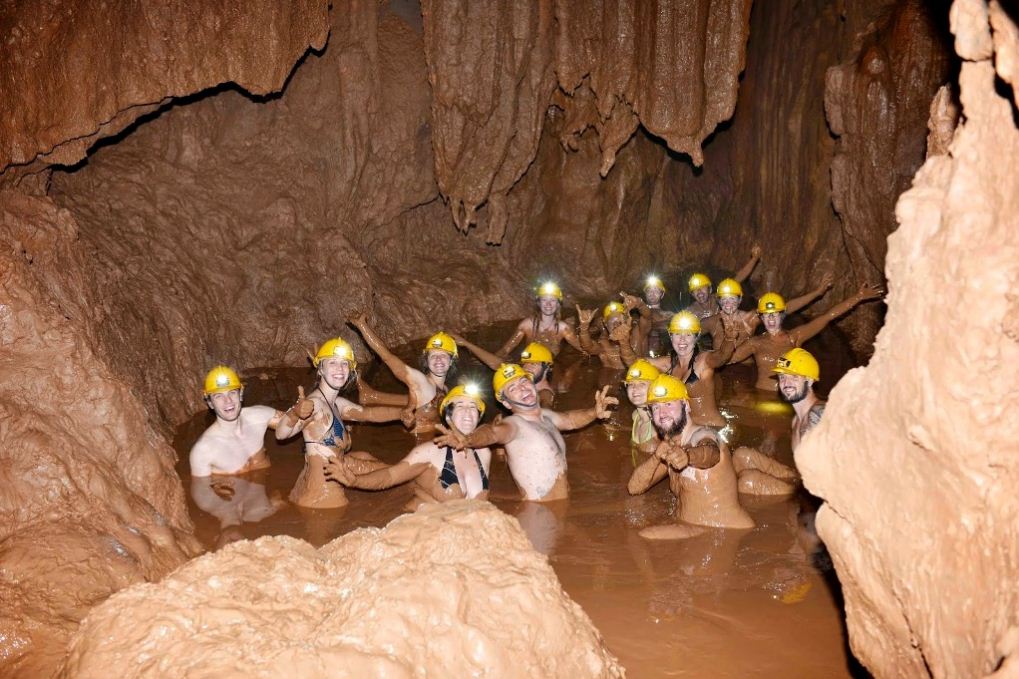
5. Thuy Cung Cave (Thủy Cung Cave)
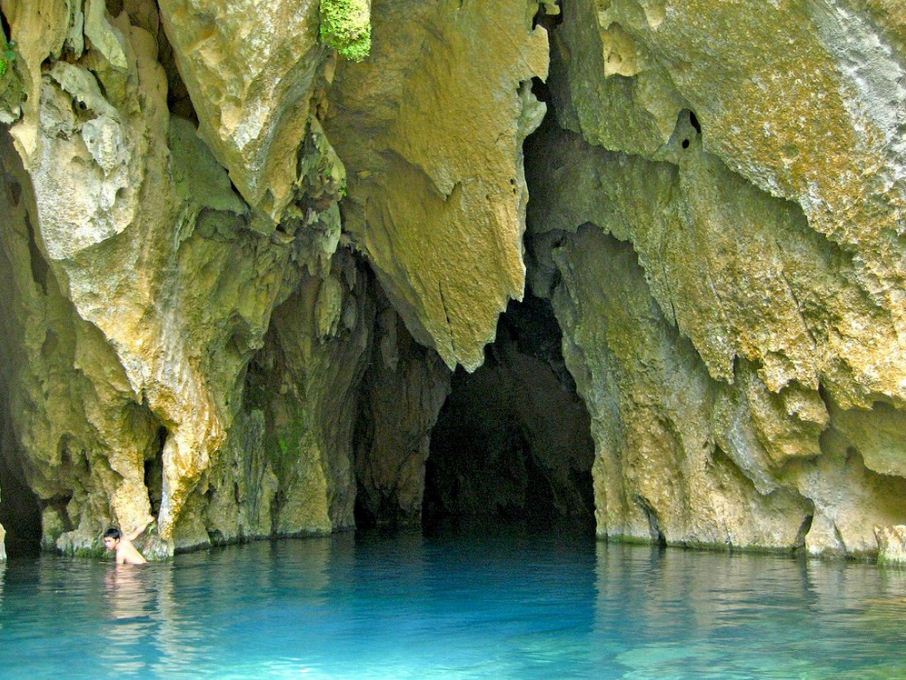
To reach Thuy Cung Cave, you have to cross the immense grass hills to go to the Dau Rai primitive forest with hundreds of ancient trees, with size of trunk over three, four people hug. Then, go backward Tien stream to Nuoc Lan Cave (Nước Lặn Cave in Vietnamese) is the back entrance of Dark Cave. With the specialized items of equipment were provided by Phong Nha – Ke Bang Tourism Center, you will have a chance to discover more than 500 meters of pristine Nuoc Lan Cave. Once back out, you can enjoy lunch with wild vegetables, fish, barbecue, rice, gravy …
From Nuoc Lan Cave, visitors continue crossing the forest to go to Thuy Cung Cave with strange blue water color. After a night of camping in Thuy Cung Cave, in the morning you will admire the dawn between the Sinh Ton Valley (Survival Valley) more than 2,000 hectares, surrounded by extremely spectacular limestone mountains ridges and immense evergreen primitive forests.

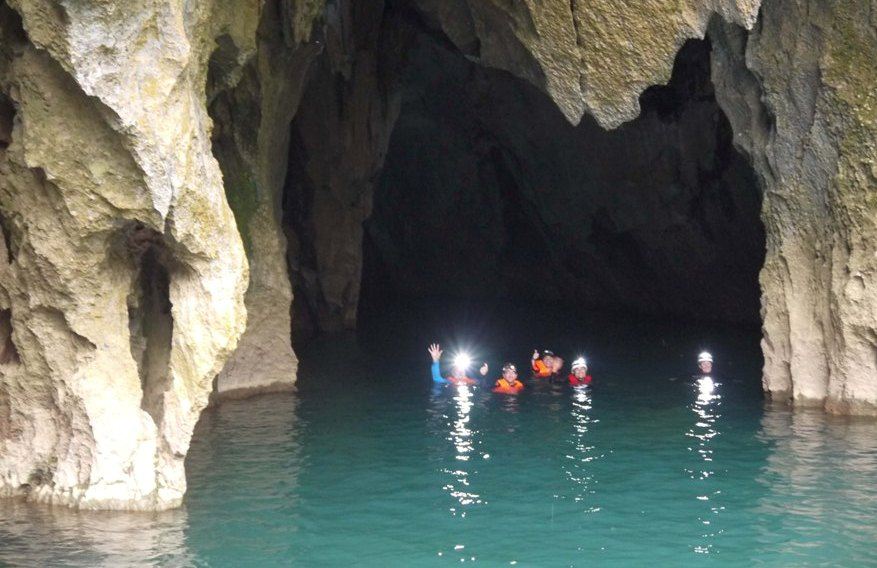
6. Tam Co Cave (The Eight girls cave, Tám Cô Cave)
Tam Co Cave is located in Tan Trach commune, Bo Trach district, Quang Binh province. 55km far from Dong Hoi City to the North West, this small cave marks the great sacrifice of young people in the resistance war against American.
The story of Tam Co Cave is perhaps even more tragic than Nga Ba Dong Loc (Dong Loc intersection way). Many people came here did not hold back tears when hearing the narrator told the story of the sacrifice of eight young volunteers, aged 18-20, with the same hometown in Hoang Hoa district – Thanh Hoa province in November 1972 at this “coordinates of fire” – Road 20 Quyet Thang.
7. Tu Lan Caves System (Tú Làn Caves System)
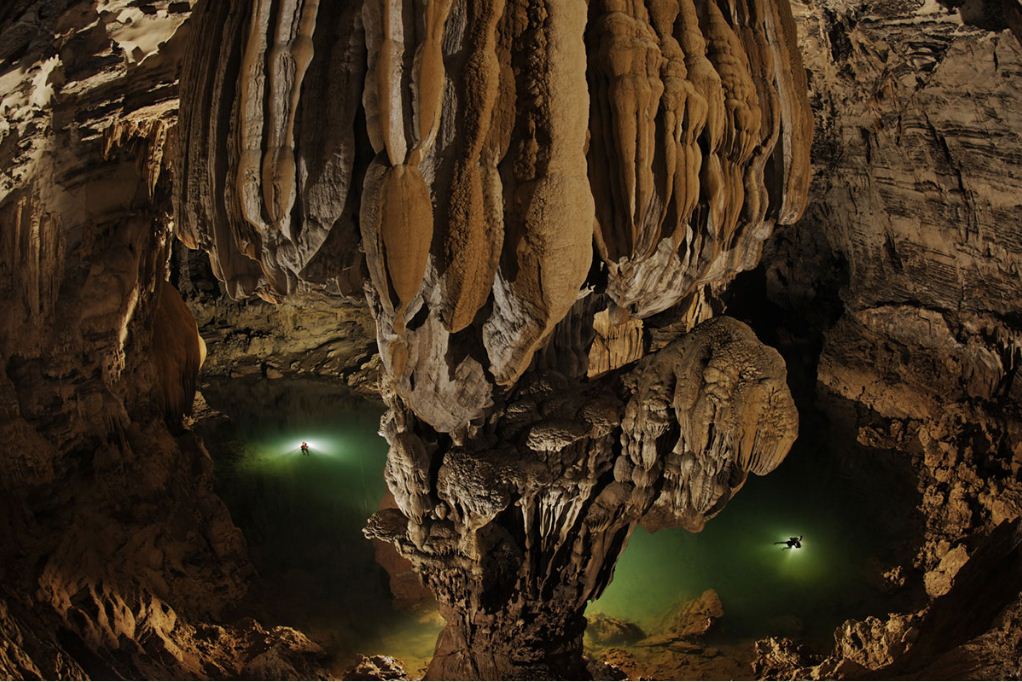
Tan Hoa hamlet, Minh Hoa district, Quang Binh province is home to the Tu Lan Caves System. In 2009, 70 kilometers to the northwest of Phong Nha, containing 8 caverns, were discovered; in 2012, another four valleys were discovered. Tu Lan Caves System includes the major cave, Tu Lan Cave, as well as Song Cave, Uoi Cave, Chuot Cave, Hung Ton Cave, Kim Cave, Tu Lan Cave, Ken Cave, and To Mo Cave.

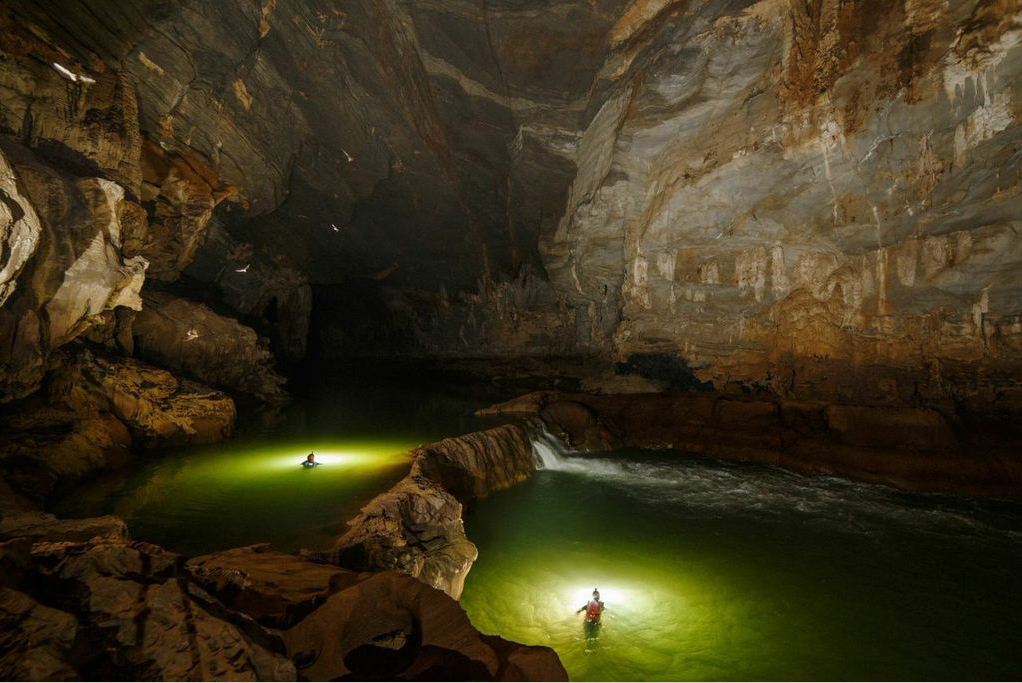
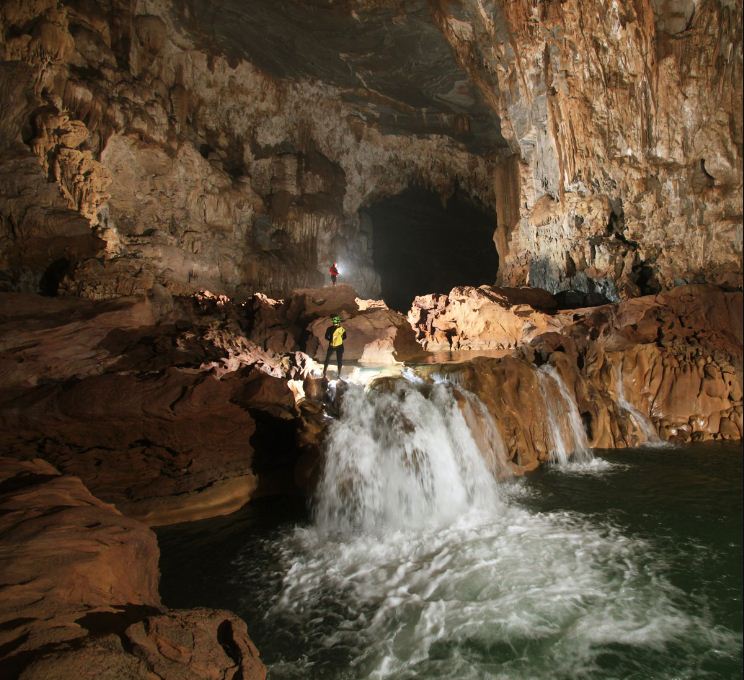
The Tu Lan Caves system has been conserved in its whole, preserving the beautiful nature’s hidden mysteries in the limestone mountains, subterranean rivers, and infinite waterfalls. To ponder what the motherland’s hands are shaping up, you must travel the harsh mountains, the forest, wander through the wide green valleys, slip muddy slides, and swim through rivers of frigid water below 20 degrees Celsius. The stunning beauty of stalactites, the mystery of the subterranean river, and the wild and pure nature of the mountains and woods will make your visit unforgettable.
8. Hang En Cave, Swallow Cave, Én Cave (Hang En)
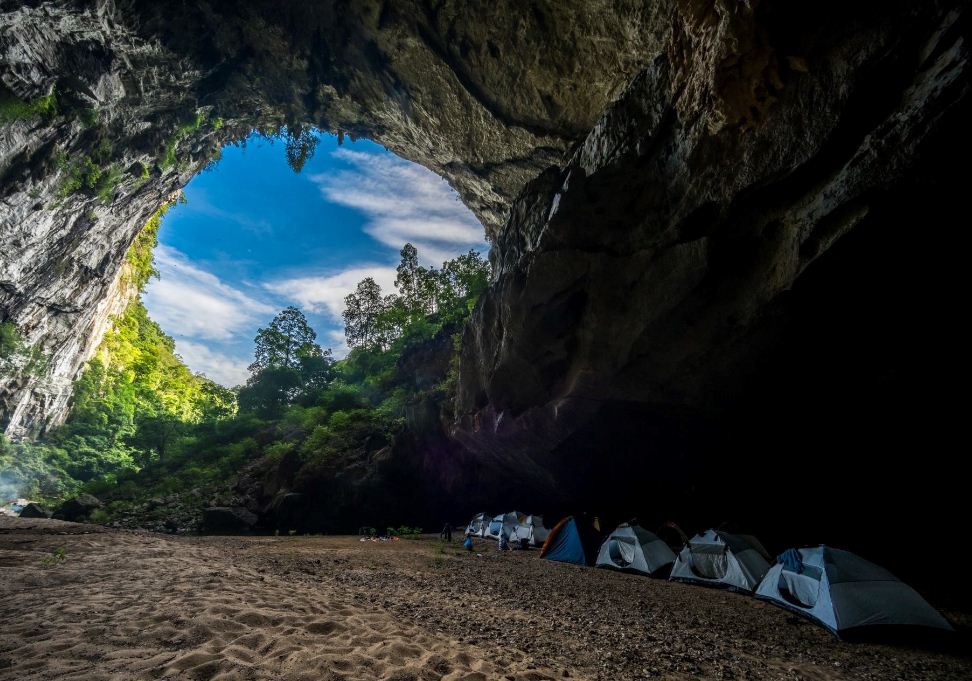
If you visit Phong Nha – Ke Bang National Park at this season, you will not be overwhelmed by the spectacular grandeur of En Cave (Hang En), the world’s third biggest cave. Exploring Hang En, in particular, takes only two days and one night, which is ideal for individuals who enjoy adventure but don’t have much time.
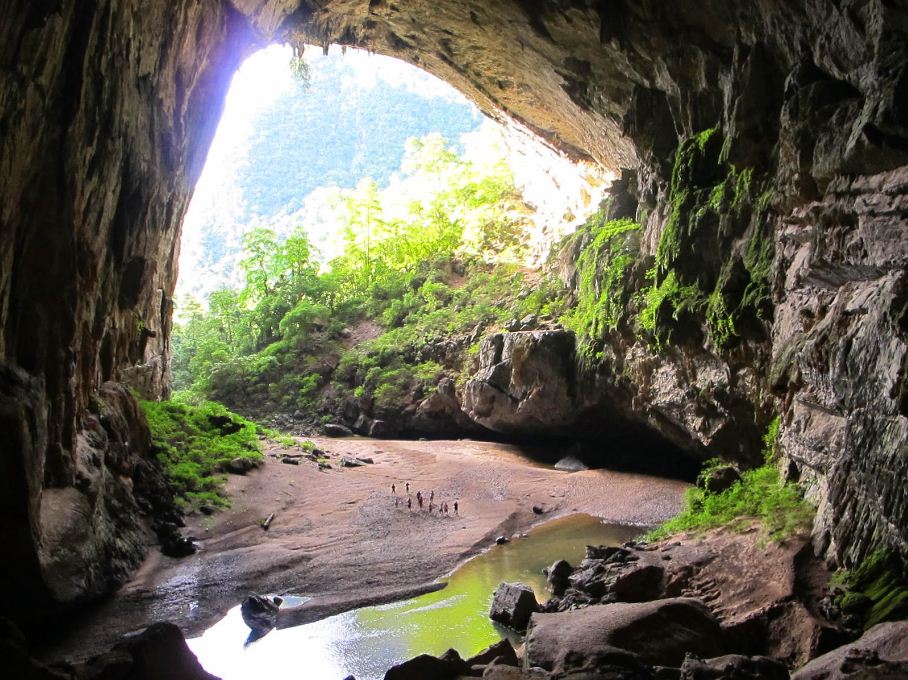
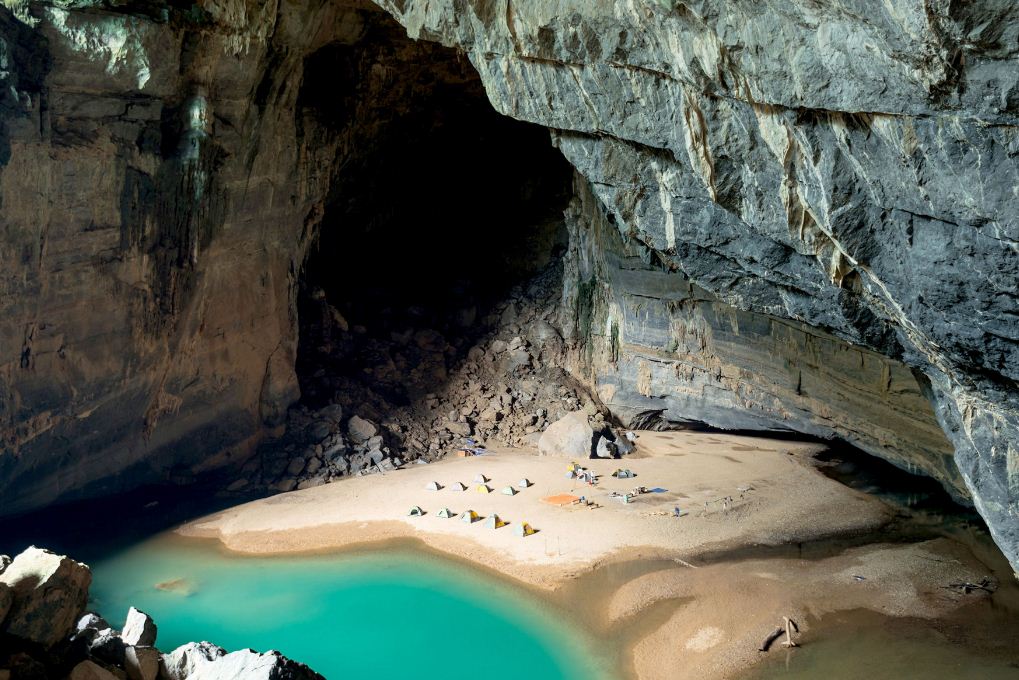
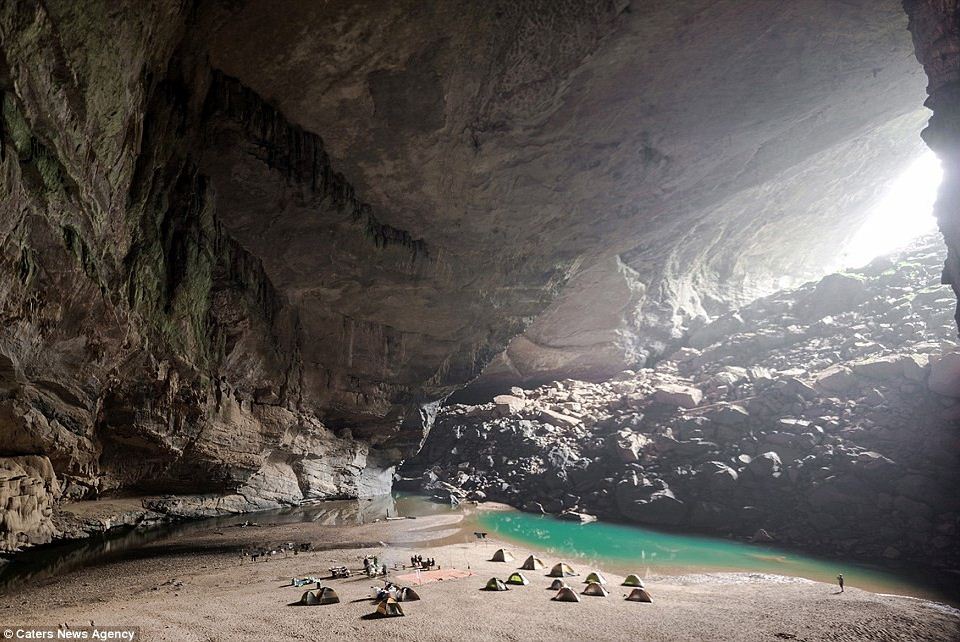
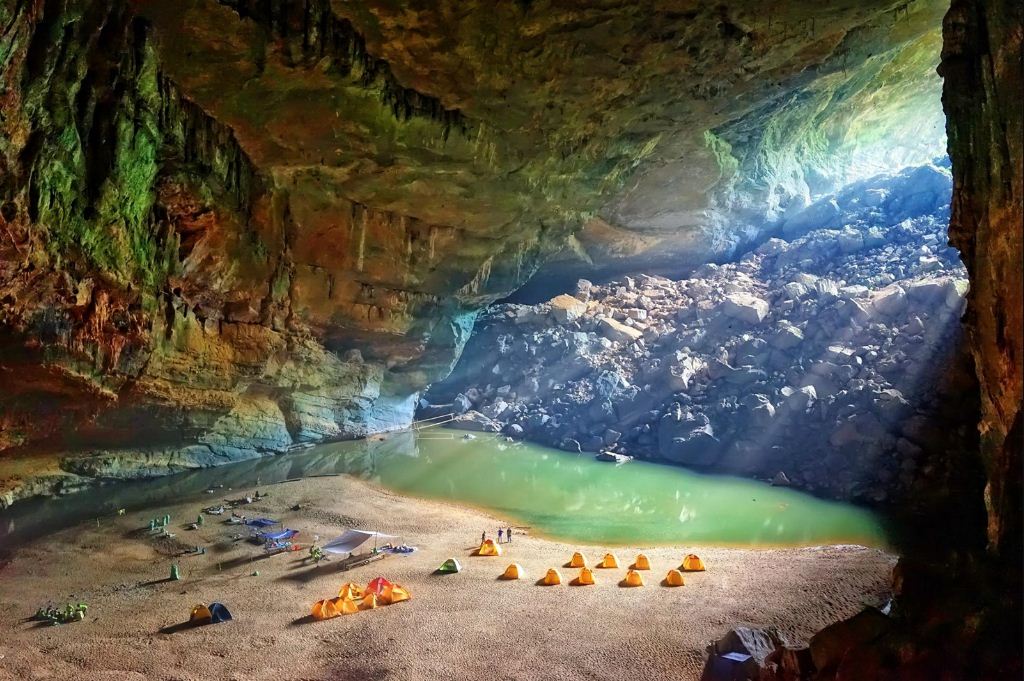
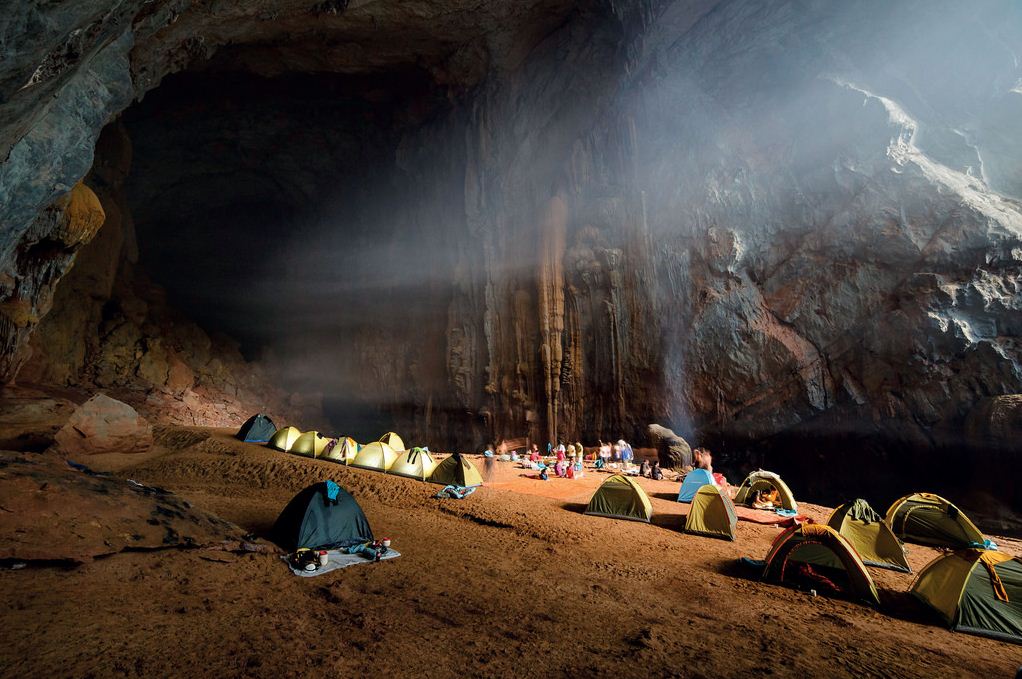
En Cave is a 1,645-meter-long cave within a mountain with three entrances positioned in the Southeast and Northwest directions along the flow of the Rao Thuong stream. National Geographic magazine (US) ranks En Cave as one of the world’s finest and most spectacular caves. En Cave, in particular, has its own ecology and climate, with a primeval forest and a magnificent river that provide tourists with one-of-a-kind experiences.
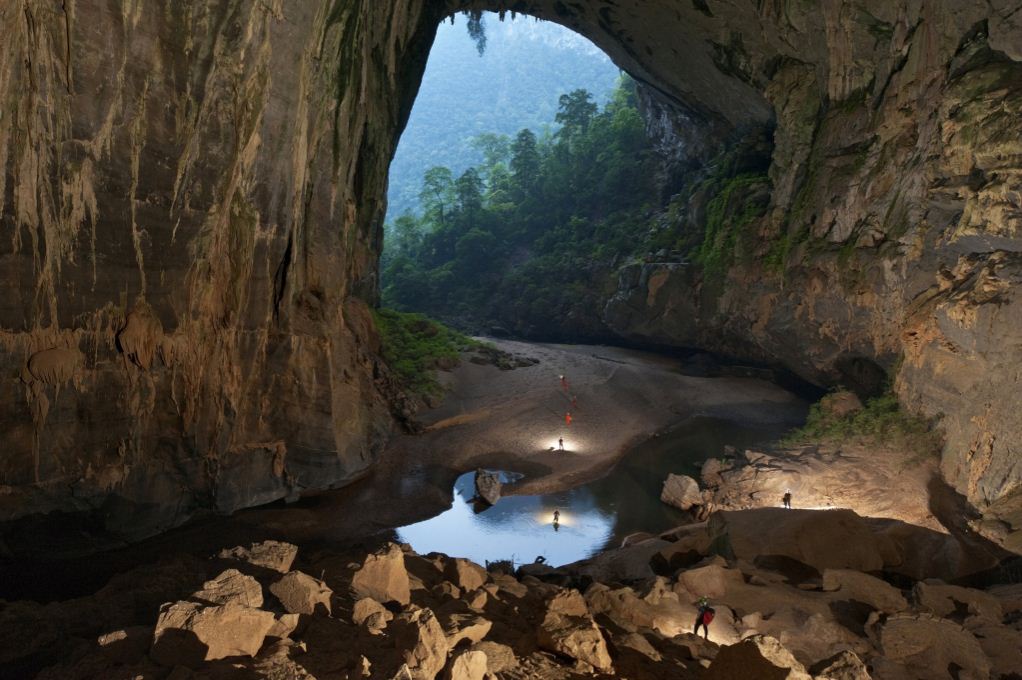
9. Son Doong Cave
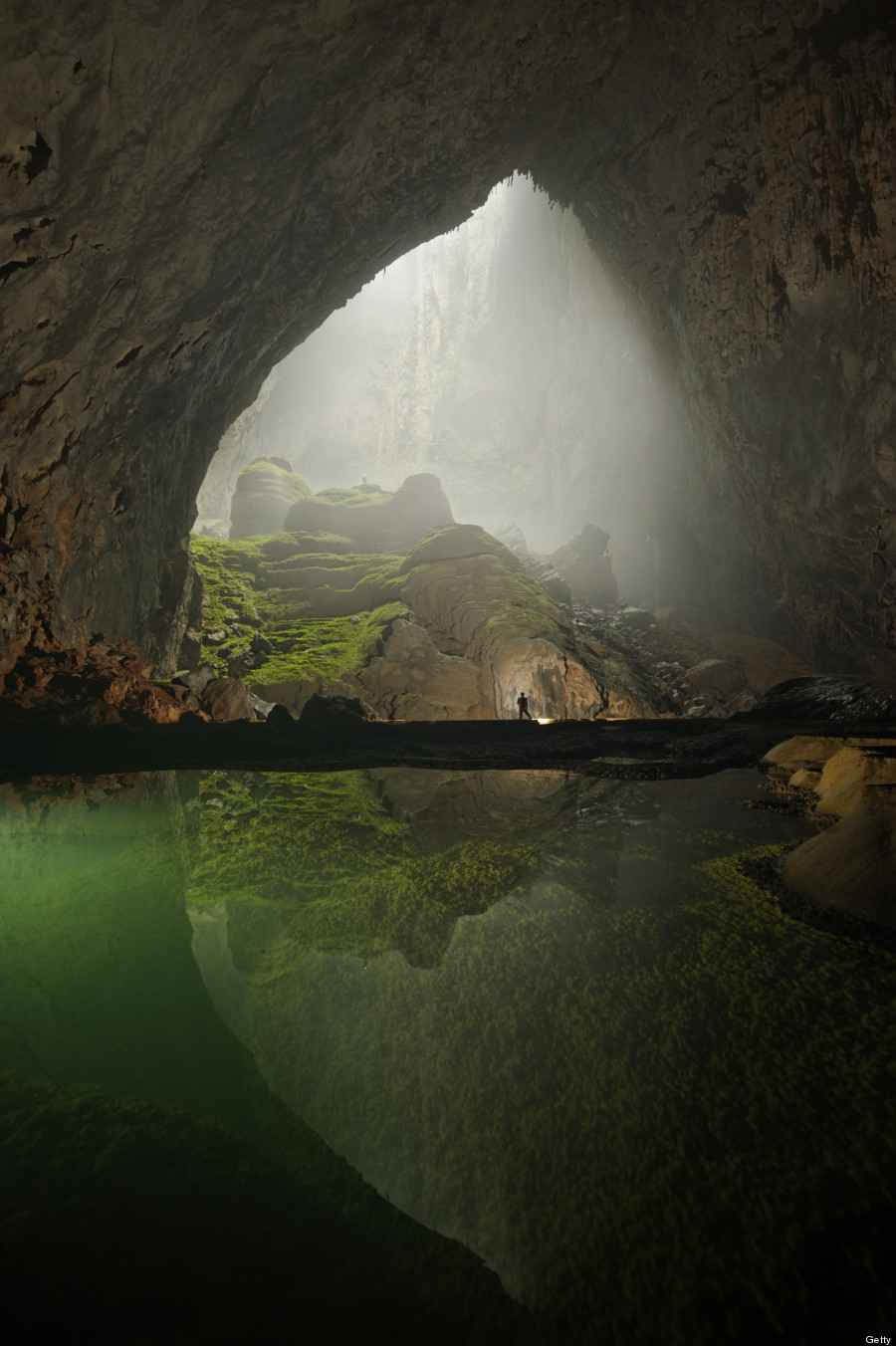
Son Doong Cave, the world’s biggest natural cave, has been located deep in the isolated mountainous region of Central Vietnam for millions of years and, since its discovery in 2009, has piqued the interest of visitors from all over the world who come to explore and reflect. Son Doong Cave is believed to be 5 kilometers long, 200 meters high, and 150 meters wide.
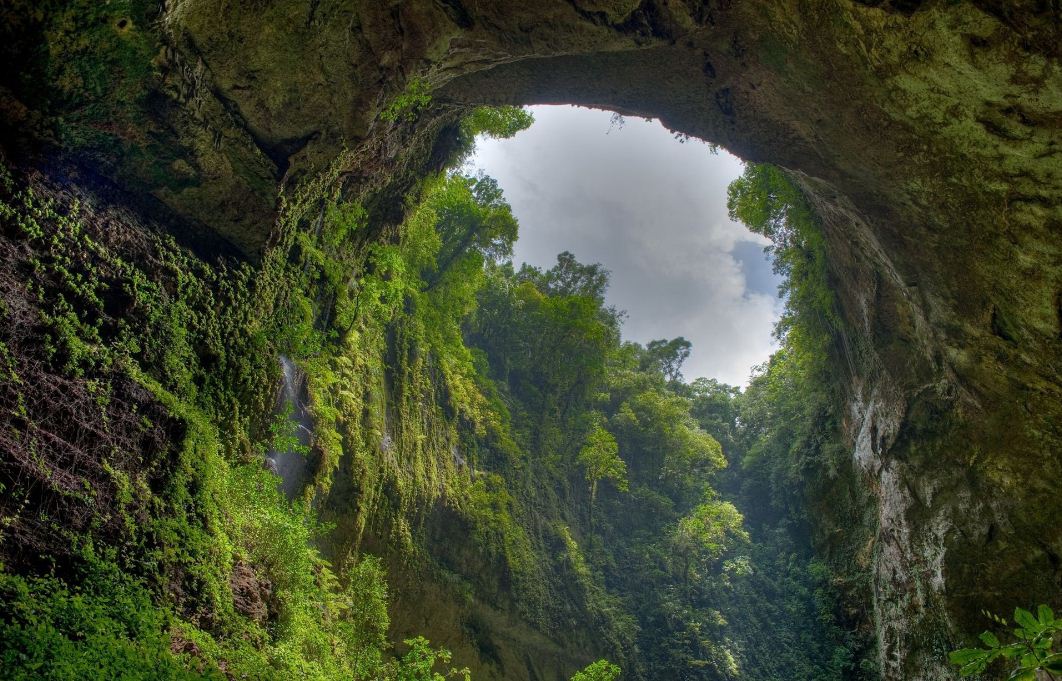

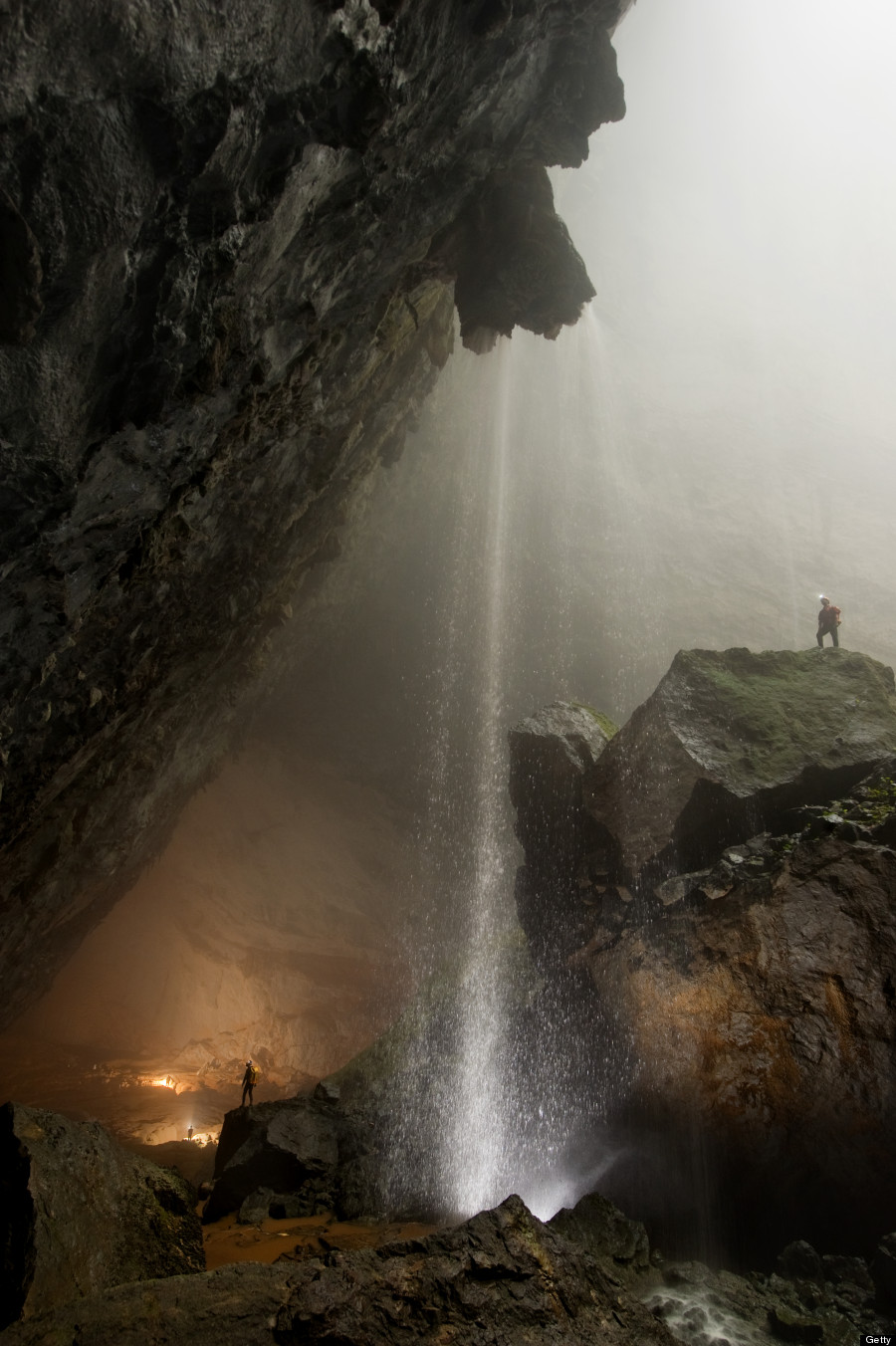
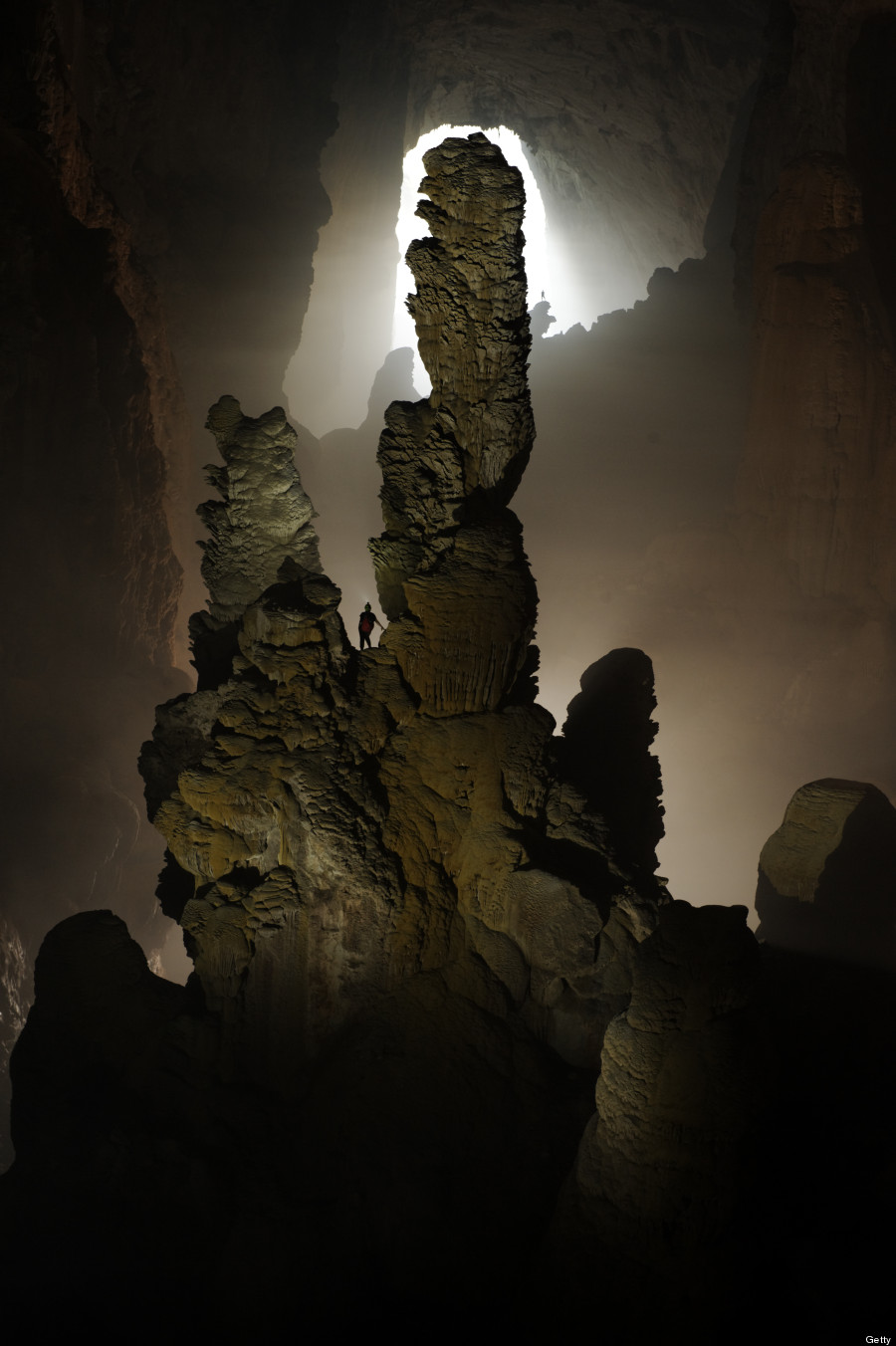
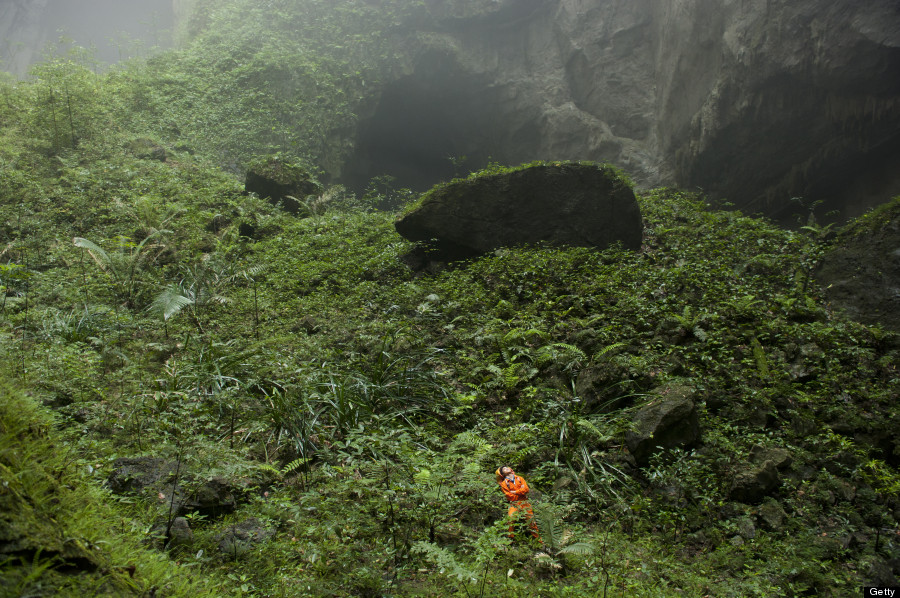
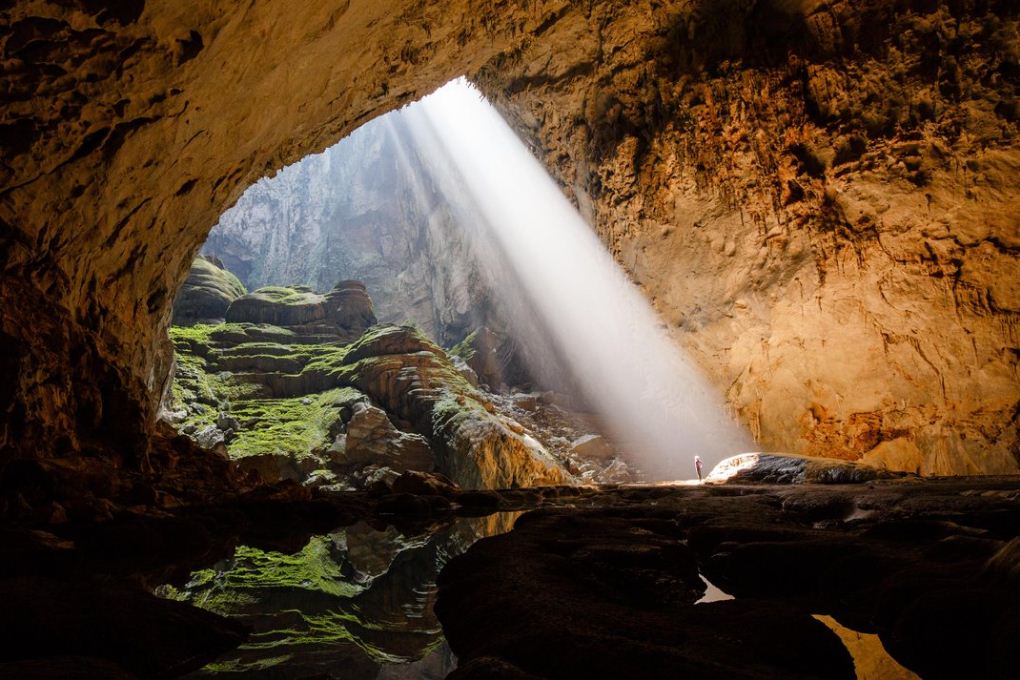
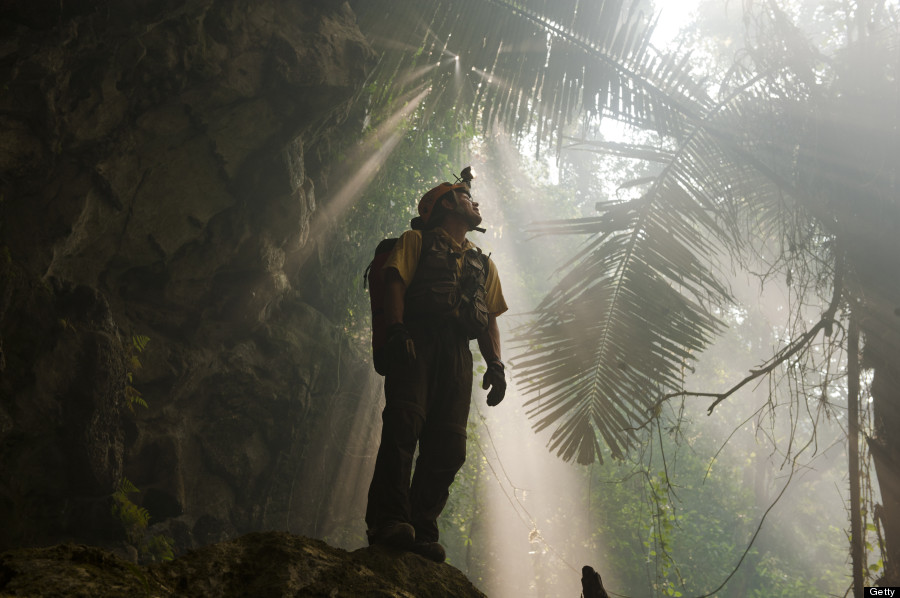
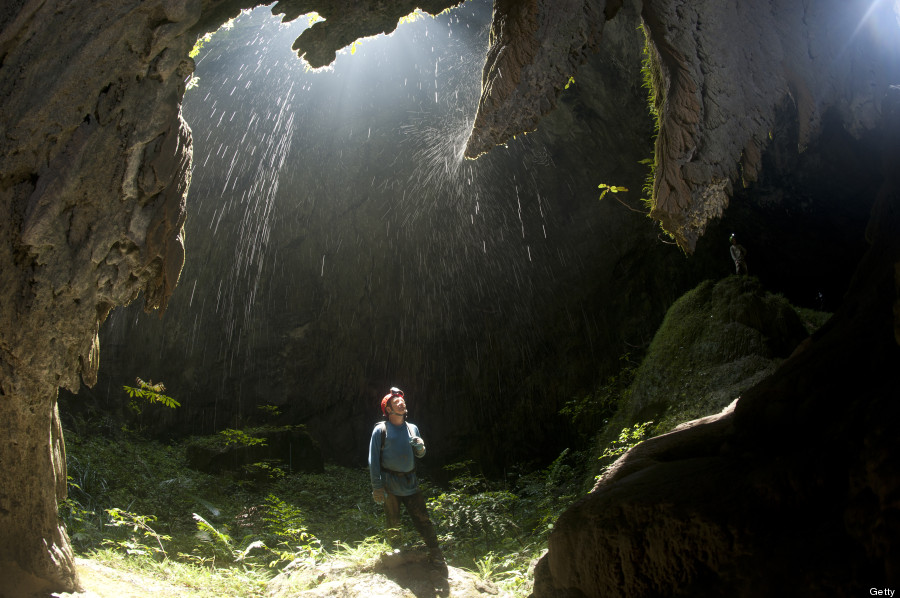

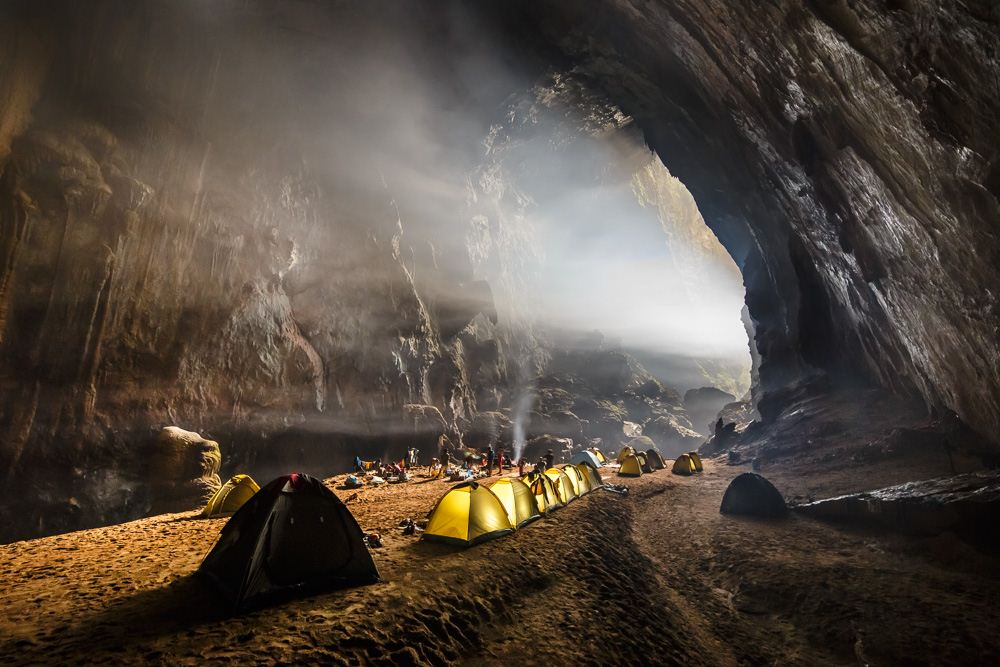
Son Doong Cave, according to Conde Nast Traveler magazine, could fit within a big blockhouse in Manhattan, USA, comparable to a 40-story building. Inside the cave, a distinct creature world exists, with light passing through “filters” from the mouths of the sinkholes above and clouds gathering near the cave’s roof, causing extreme humidity. Son Doong’s stalagmites reach heights of over 80 meters. Limestones the size of baseballs are strewn across the cave floor. This breathtaking panorama deep down demonstrates that the planet still has many lovely places for humans to discover.
